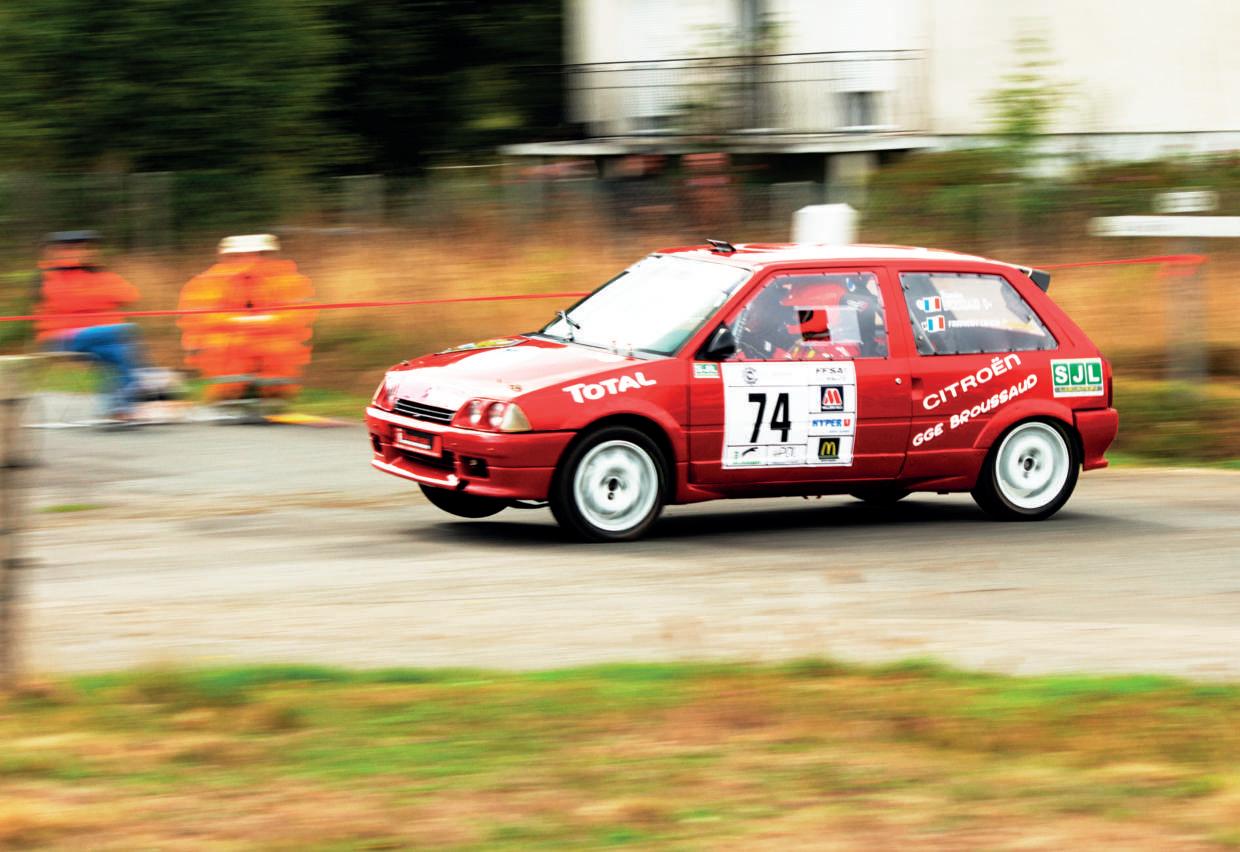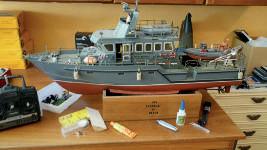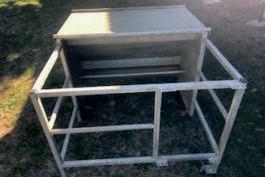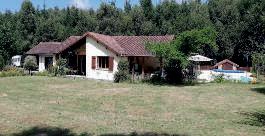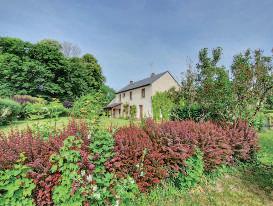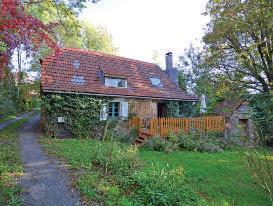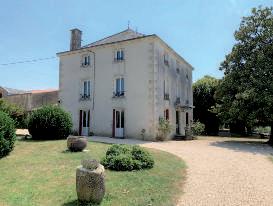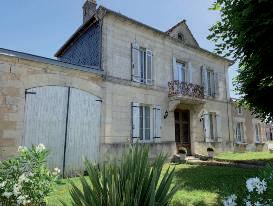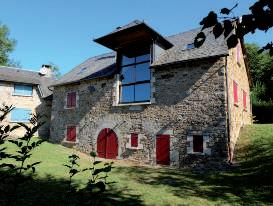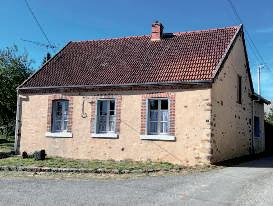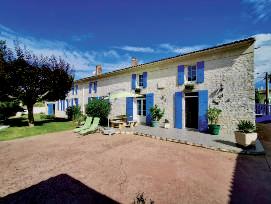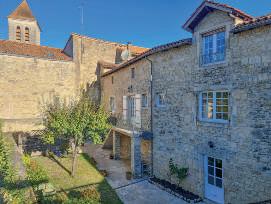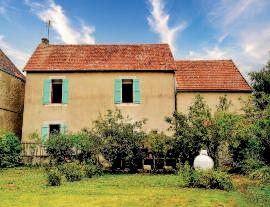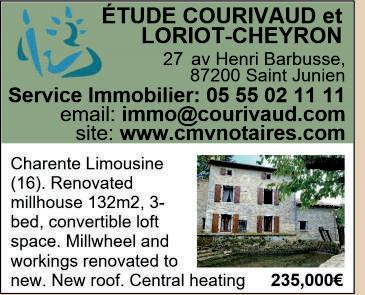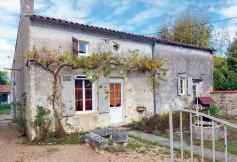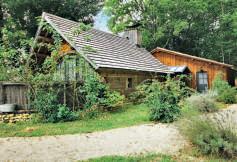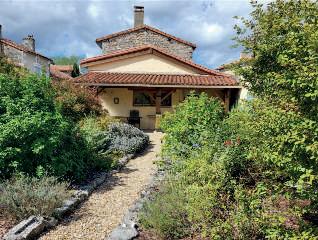
































CONTACT US: Tel: 05 17 36 15 32 email: editors.etcetera@gmail.com website: www.etceteraonline.org 17 rue des Chaumettes 86290 St Léomer
etcetera
et Periodique
80903463000016. La Présidente G. Feasey
Le Bourg, 87360 Verneuil Moustiers.
Rotimpres. Pol. Ind Casa Nova. Carrer Pla de l’Estany s/n. 17181 Aiguaviva (Girona) Espagne. etcetera est gratuit.
While we always do our best to ensure the content in this magazine is given in good faith and businesses are reputable, we accept no liability for any errors or omissions and do not endorse any companies, products or services. Articles written are the personal opinions of the original authors and do not necessarily reflect the views of etcetera magazine.
15 SAMU (Medical)
17 Gendarmes (Police)
18 Pompiers (Fire and also trained in medical emergency)
114 Text-message emergency number for deaf/hard of hearing

119 Child abuse
115 Homeless
113 Drugs and alcohol
112 European emergency not always English 1616 Emergency- Sea & Lake 3131 Last incoming call, key ‘5’ to connect Orange English speaking helpline 0033 (0)9 69 36 39 00
Website in English: www.orange.com/en/home Technical assistance for landlines (French): 3900 (+33 9 69 39 39 00 from abroad)
SFR 1023 or 00336 1000 1023 (Not English) EDF 8am to 8pm, Monday to Saturday. +33 (0)9 69 36 63 83 EDF Helpline in English
0033 562164908 (From UK)
05 62 16 49 32 Fax
E-mail: simpleenergywithedf@edf.fr

CPAM - 09 74 75 36 46
Veolia Water Emergency No: 24h/24 et 7j/7
05 61 80 09 02 (press 1 for urgent problems or 2 for a technician)
S.E.P Du Confolens (Water)
05 87 23 10 08 Emergency 24/7
Aéroport Int’l Limoges 05 55 43 30 30
SNCF (train times, buying tickets etc) 36 35
Alcoholics Anonymous
For contact details of meetings in your area including those conducted in English, visit www.aafrance.net
05 55 05 55 55 Limoges (CHU)
05 55 43 50 00 St Junien
05 55 47 20 20 Bellac
05 49 44 44 44 Poitiers
05 45 24 40 40 Angoulême

05 49 32 79 79 Niort
05 45 84 40 00 Confolens
Women for Women in France offering support to foreign-born (non-French speaking) women dealing with domestic abuse www.womenforwomenfrance.org

Counselling In France Counsellors, psychotherapists, NLP, CBT etc offering therapy in English to expatriates all over France on www.counsellinginfrance.com
SSAFA France 05 53 24 92 38 email france@ssafa.org.uk
French Health Insurance Advice line
CPAM English speaking Advice line: 09 74 75 36 46 (from France)
0033 974 75 36 46 (from other countries). The line is open from Monday to Friday, from 8:30 a.m. to 5:30 p.m.
NHS website : www.nhs.uk/using-thenhs/healthcare-abroad www.ameli.fr
No Panic France Helpline: No Panic UK helpline: 0044 1 952 590 545 11h - 23h (French time) 7/7 www.nopanic.org.uk /nopanicfrance@orange.fr English-speaking Crisis Line
SOS- HELP 01 46 21 46 46 3pm-11pm 7/7
British Consulate in Paris 01 44 51 31 00
British Consulate in Bordeaux 05 57 22 21 10 www.ukinfrance.fco.gov.uk/en/ Credit Agricole English Speaking Helpline Charente (residents only) 05 45 20 49 60
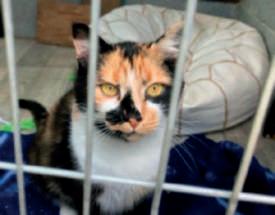
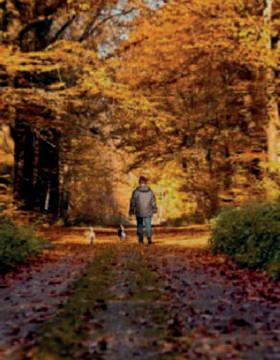
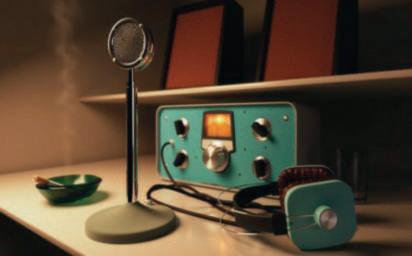








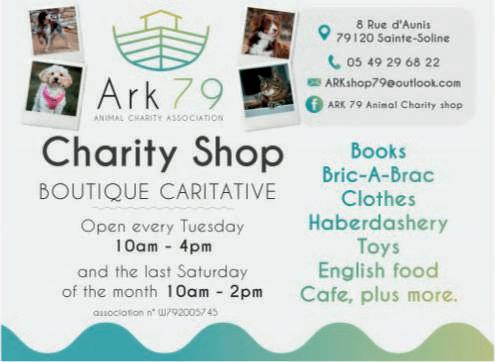





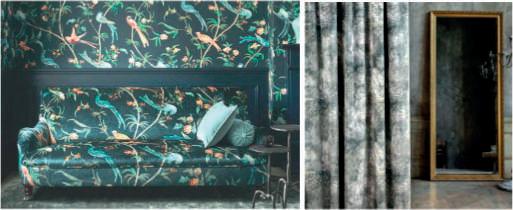





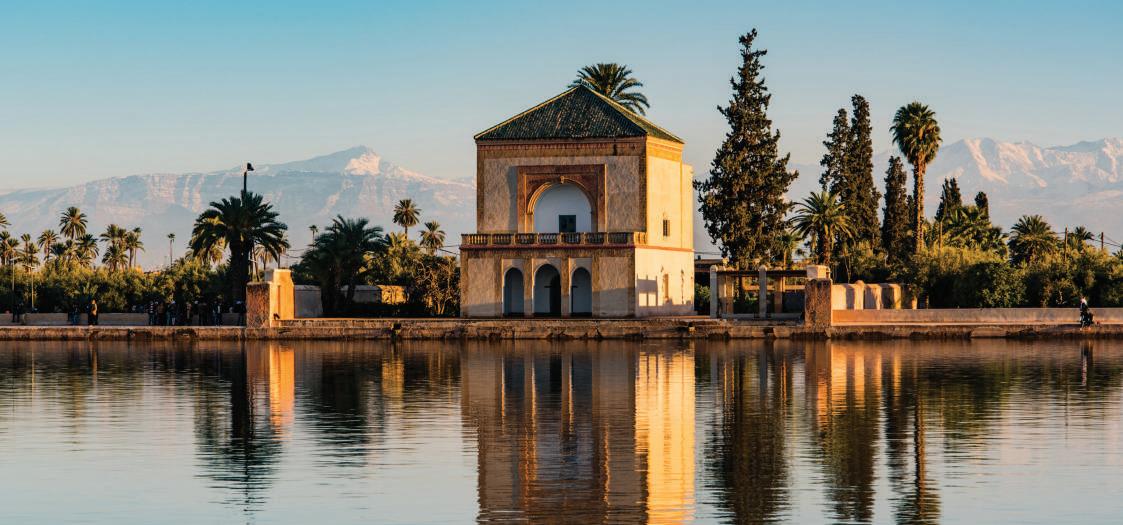

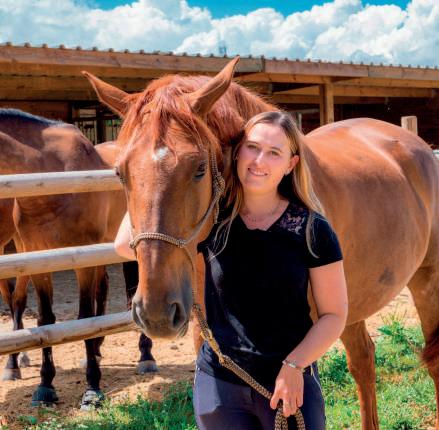



À la fin octobre et au début novembre, plusieurs dates se chevauchent. Le 31 octobre, c’est Halloween, qui a pour origine la veillée de la Toussaint et qui est devenue de nos jours, avec l’influence des États-Unis, une fête plus commerciale (et qui fait peur !). Le 1er novembre, c’est la Toussaint, qui est célébrée comme le jour où nous nous rendons sur les tombes de nos proches, mais en fait, la Toussaint est la fête de tous les saints, donc nous tous, les vivants et les morts. Le 2 novembre, c’est la Fête des Défunts, qui est le jour où nous rendons hommage à nos proches décédés.
In late October and early November, several dates overlap. On 31st October, it's Halloween, which originated from All Saints' Day Eve and has become nowadays, with the influence of the United States, a more commercial (and scary!) holiday. 1st November is All Saints' Day, which is celebrated as the day we go to the graves of our loved ones, but in fact, All Saints' Day is the feast of all the saints, so all of us, the living and the dead. 2nd November is the Celebration of the Deceased, which is the day we pay tribute to our deceased loved ones.
I shall take this opportunity to tell you about what may happen in the event of a death in France. It's not very joyful but it's important to talk about it and know what to do and what happens.
On peut mourir à la maison, à l’hôpital, sur la route, dans le jardin, partout… et il n’y a pas d’âge pour mourir !
You can die at home, in the hospital, on the road, in the garden, anywhere… and there is no specific age!
Que faire si votre mari ou épouse / votre conjoint ou conjointe ou ami ou amie décède ?
What to do if your husband or wife or partner or friend dies?

Le souvenir du décès de nos proches est très présent fin octobre et début novembre. En réalité, le décès peut être présent à n’importe quel moment de l’année et de la vie.
The memory of the death of our loved ones is very present at the end of October and beginning of November. In reality,

death can be present at any time of the year and life.
Je prends cette opportunité pour vous parler de ce qui pourra se passer en cas de décès en France. Ce n’est pas très joyeux mais c’est important d’en parler et de savoir quoi faire et comment cela se passe.
Si le décès intervient à la maison, vous devez contacter votre médecin traitant en premier lieu. Ensuite, vous pourrez bien sûr appeler des amis pour venir vous soutenir dans cette épreuve. Le médecin écrira un Certificat Médical de Décès qui confirme légalement le décès. If the death occurs at home, you should contact your French GP in the first instance. Then, of course, you can call friends to come and support you during



établissement
Pompes
pouvez
moins
une bonne idée de noter leurs
connaître déjà un dans votre ville
avoir
dans ce moment
pouvez demander à votre Mairie.
will need to contact a funeral home. You may already know one in your town
a good idea to write down their contact details before you need it, it's one less stress during this difficult time). Otherwise, you can ask your Mairie / Town Hall.
Si le décès intervient à l’hôpital ou dans un établissement de santé ou une maison de retraite, le médecin aux côtés du défunt écrira le Certificat Médical de Décès.
L’établissement de Pompes Funèbres rattaché au lieu du séjour viendra emporter le défunt et l’emmènera aux services mortuaires de l’hôpital.
If the death occurs in hospital or in a health institution or retirement home, the attending doctor will write the Medical Certificate of Death. The associated Funeral Home will take the deceased to the hospital mortuary.
Vous-même ou quelqu’un de votre choix devrez ensuite aller à la Mairie de la ville où a eu lieu le décès dans un délai de 24 heures maximum pour déclarer le décès. Souvent, l’établissement de Pompes Funèbres peut le faire (si on le lui demande et s’il est informé du décès à temps). Généralement, si le décès a eu lieu à l’hôpital, l’hôpital fait cette déclaration, mais demandez confirmation.
You or someone of your choice will then have to go to the Mairie / Town Hall of
the town where the death took place within a maximum of 24 hours to declare the death. Often, the Funeral Home can do this (if asked and informed of the death in time). Generally, if the death occurred in the hospital, the hospital makes this declaration, but ask for confirmation.
Bien sûr, pour déclarer le décès à la Mairie et pour utiliser les services des Pompes Funèbres, il faudra apporter beaucoup de papiers. La France aime les papiers ! Les documents les plus demandés sont les suivants : le passeport de la personne qui fait la déclaration, le passeport du défunt, sa carte de séjour, son acte de naissance avec sa traduction assermentée en français, le Certificat Médical de Décès écrit par le Médecin, l’acte de mariage (le cas échéant) avec sa traduction assermentée en français, une facture d’eau ou d’électricité récente (c’est un justificatif de domicile).
Of course, to declare the death to the Mairie / Town Hall and to use the services of the Funeral Home, it will be necessary to bring a lot of papers. France loves papers! The most requested documents are the following: the passport of the person making the declaration, the passport of the deceased, his / her Carte de Séjour / residence permit, his / her Birth Certificate and its legal translation into French, the Medical Certificate of Death written by the Doctor, the Marriage Certificate (if applicable) and its legal translation into French, a recent water or electricity bill (this is proof of address).
La Mairie pourra alors écrire un Acte de Décès. Vous pouvez en avoir plusieurs copies, c’est gratuit. Vous en aurez besoin partout et pour toutes les nombreuses démarches administratives à faire suite au décès.
The Mairie / Town Hall will then be able to write a Death Certificate. You can have
multiple copies, it's free. You will need it everywhere and for all the many administrative procedures to be taken following the death.
Si le défunt a une assurance couvrant les frais d’obsèques, contactez cette assurance le plus vite possible et donnez leurs coordonnées aux Pompes Funèbres. Cette assurance aide le défunt mais aussi les proches, c’est un grand soutien. Les Pompes Funèbres peuvent aussi vous aider avec des lettres-types à envoyer à toutes les autorités, à la CPAM, à la Préfecture, au Centre des Impôts, aux caisses de
Contact us to book your French lessons!

Broaden your horizons with CONTINENTAL HORIZONS!
05 49 84 17 73 / 06 20 10 34 49
Email : continentalhorizons@free.fr



Isabelle works for CONTINENTAL HORIZONS Language Centre in L’Isle Jourdain and teaches French as a Foreign Language every day in their many classrooms. Do not hesitate to contact her! www.continental-horizons.com

Bon courage et à bientôt !
Ensuite, vous pourrez bien sûr appeler des amis pour venir vous soutenir dans cette épreuve
retraites et aux divers fournisseurs comme l’eau, l’électricité, le téléphone, les assurances, etc. N’oubliez pas, il faut aussi aller voir un Notaire en France pour régler la succession.
If the deceased has insurance covering funeral expenses, contact this insurance as soon as possible and give their contact details to the Funeral Home. This insurance helps the deceased but also the relatives, and is a great support. The Funeral Home can also help you with model letters to be sent to all authorities; the CPAM, the Prefecture, the Tax Office, pension funds, and various suppliers such as water, electricity, telephone, insurance, etc. Don’t forget, it is also necessary to go to a Notaire / Notary in France to settle the succession.

Il faut savoir qu’en France l’enterrement ou la crémation se fait très très rapidement après le décès, comparé au long délai en GrandeBretagne. La plupart du temps, ici, cela se fait en 3 ou 4 jours.
Cependant, vous pouvez demander aux Pompes
You should know that in France burial or cremation is done very quickly after death, when compared to the long delay in Great Britain. Most of the time, here, it is done in 3 or 4 days. However, you can ask the Funeral Home to extend this period, if possible; this can give time for any family who live far away, for example in the United Kingdom, to travel and come to attend the funeral. Ask the Funeral Home from the beginning and they will do their best, when possible, but they cannot wait more than 7 days after the death.
Le décès est bien sûr un choc pour la famille et les proches, mais il faut en parler car cela retire beaucoup de stress quand vous vous y êtes préparés. Parlez avec vos proches de vos volontés : enterrement ou crémation, quel cercueil, quelles Pompes Funèbres, quels types de cérémonie et comment, quelles musiques, quelles prières ou textes… Dites à vos proches si vous avez une assurance obsèques, un testament, etc.
Surtout, n’hésitez pas à demander du soutien à votre famille et à vos amis
Funèbres de prolonger ce délai, si possible, cela peut donner du temps à la famille qui habite loin, par exemple au Royaume-Uni, de se déplacer et de venir assister aux funérailles.
Demandez-le dès le début aux Pompes Funèbres et ils feront de leur mieux, quand c’est possible, mais ils ne peuvent pas attendre plus de 7 jours après le décès.
The death is of course a shock for family and loved ones, but you have to talk about it because it takes a lot of stress away when you have prepared for it. Talk with your loved ones about your wishes: burial or cremation, which coffin, which Funeral Home, what types of ceremony and how, what music, what prayers or texts... Tell your loved ones if you have funeral insurance, a will, etc.
Vous le savez déjà et vous avez vu ici qu’il y a beaucoup de documents à fournir. Je vous conseille donc de
mettre dès maintenant ce qui est possible dans un dossier. Par exemple : l’Acte de Naissance avec sa traduction en français, l’Acte de Mariage avec sa traduction en français, le contrat assurance obsèques, les coordonnées des Pompes Funèbres locales et de la Mairie, la liste de vos enfants et leur numéro de téléphone, si vous avez un testament et dire où il est, etc.
You already know this and you have seen here that there are many documents to be provided. I therefore advise you to put what is possible in a file now. For example: the Birth Certificate with its translation into French, the Marriage Certificate with its translation into French, the funeral insurance contract, the contact details of the local Funeral Home and the Mairie / Town Hall, the list of your children and their telephone numbers, if you have a will and where it is, etc.
Surtout, n’hésitez pas à demander du soutien à votre famille et à vos amis, n’hésitez pas à consulter votre médecin et un psychologue, n’hésitez pas à demander de l’aide pour le côté administratif et pour vous accompagner chez le Notaire. Above all, do not hesitate to ask for support from your family and friends, do not hesitate to consult your doctor and a psychologist, do not hesitate to ask for help for the administrative side and for accompaniment to the Notaire / Notary.
J’ai aidé plusieurs amis et clients à traverser cette douloureuse période.
I have helped several friends and clients through this painful time.
Back in September Mrs W and I spent a memorable week down in Provence celebrating our wedding anniversary. Angie couldn’t believe it’s been 25 years; she swore it was closer to 40 (she’s such a kidder). Anyway, we left home just after the death of Queen Elizabeth was announced and, since we then observed our customary holiday news blackout, we missed the full extent of the commemorations going on until we returned home. The combed hillsides breathing lavender across the vines and olive groves is a pretty good insulator from world events. It was blissful.
There’s little to add to the tonnage of words written regarding Charles’ accession to the throne. In any case, the historical significance of these events is beyond dispute, (although surely after ten days of imposed solemnity, even many royalists were thinking “enough”). My republican views stem from both a fondness for a democratically elected head of state and a lifelong discomfort at people’s eagerness to embrace subservience. Nevertheless, I fully respect the deep affection felt by so many for the Queen herself. That said, I admit to being somewhat bewildered by the constant intrusion into the proceedings by Paddington Bear.
I was also bemused by the lady standing patiently in ‘The Queue’, who credited the Queen with “showing what a woman can achieve”. Predictably, the end of that sentence – “when born to a fantastically rich ruling family” – hung in the air, unsaid.

So, this might feel like a complete non sequitur but stick with me. Coincidentally, around this time I happened upon a profile of the astonishing Nadia Nadim. Briefly: Nadia was born in Afghanistan in 1988, losing her father to a Taliban execution squad when she was just twelve years old. With her mother she fled the country and eventually settled in Denmark, where Nadia revealed a talent for football. She progressed to a stellar professional career, becoming a Danish international and playing for clubs including Paris Saint-Germain and Manchester City. In her career she scored more than 200 goals. And that’s nowhere near all.
Not content with sport stardom, Nadia Nadim was simultaneously studying medicine at university and qualified as a doctor in January this year. Oh yes, almost forgot - she speaks nine languages. (By way of comparison: some years ago, in a

cottage near the Pyrenees, I got cosy one night with a bottle of Rioja and a Spanish phrase book in preparation for a drive over the mountains. The next morning all I could remember was how to say “Where is the water meter?” and “There’s something wrong with my leg”. Great Rioja, though.)
Anyway, on the face of it, there would appear no logical basis to connect or contrast the lives of these two women –Elizabeth Windsor and Nadia Nadimborn 60 years apart into worlds different in every conceivable way. Except for this: in childhood, both of them were suddenly shoulder-charged by outside events onto a different road. In Elizabeth’s case the abdication of her uncle in 1936 forced her father into the role of King and made her now the heir to the British throne. In that moment the most gilded of cages began to close around her. In stark contrast, the murder of Nadia’s father was the tragic catalyst to an unimagined but greatly fulfilling life. Where Elizabeth became the property of others, Nadia flew like a bird released.
We will never know what dreams Elizabeth Windsor might have realised if she had been permitted a different existence. What innate talent might she have discovered before tradition – the crusher of lives – was imposed as her entire raison d'être? Having a royal family in this twenty-first century seems to me anachronistic and absurd. Elizabeth’s eldest son now wears the crown with her grandson and even great-grandson standing in line for the bejewelled burden to land on them. Their lives will never be their own, sacrificed instead to suffocating “duty”. For all the opulence and material comforts, I wouldn’t wish it on anyone.
To many, the monarchy stands at the pinnacle of a class-based society, the very embodiment of inequality; for others it’s a symbol of history, stability in a chaotic world. At some point Great Britain will hold a measured debate concerning the future of its structure and constitution. At the centre of those discussions will be the big questions - “Does the monarchy give value for money?”, “Can it adapt?” and “If not, what would a republic look like?”
But perhaps we should also make room to (wildly) paraphrase President John F. Kennedy, “Ask not what the royal family do for us. Ask instead what on earth being a royal family does to them”.
Brian White lives in south Indre with his wife, too many moles and not enough guitars
In that moment the most gilded of cages began to close around her
Sarah is the author of craftinvaders.co.uk where she blogs about her original craft tutorials, recipes, foraging, and developing wellbeing through being creative, spending time outdoors and connecting with nature
 BySarahWhiting
BySarahWhiting


Another easy project for you to do at home! I used lovely little tiles made from marble. I was able to buy an individual sheet of square tiles and the single base tile for very little, so if you don’t have any leftover from another project, they are cheap to buy.

Materials

12 tiles (I used 5cm square and 1cm thick, this is perfect for small pots 1 longer rectangular tile for the base Ultra strong fast drying glue
1. As my tiles came as a sheet, I started by removing them from the backing.
2. The ceramic tiles stuck together really easily using the glue. Since this adhesive I used is re-positional for 3 minutes you can get all four sides in place, then make any adjustments you need to make a perfect cube.
3. Once I had made the three cubes out of tiles, I left them to dry for about two hours. Check the instructions of the glue, mine fully set and achieved full strength after 24 hours.
4. When you stick the small tiles together, you need a larger one as a base. I positioned the three square

pots on the base tile by eye. Once I was happy with the spacing I used a sharpie to mark out the inside of each cube to use as a guide when I stuck each one down.
5. I gave the plants a good drink of water. This helps soften the compost around the roots making it easy to insert them into the square pots.
6. It is always advisable to use some gravel in the bottom of pots when planting succulents and is essential when the containers are as small as they are here. Succulents hate sitting in water and always appreciate good drainage. I used a textured tile but I recommend you don’t, the water will leak out!
7. Carefully lift the plants out of their original pots, and place into the new tile mini pots. I used the end of a pen to gently push and secure the soil around the plant into the pot. Et voila!

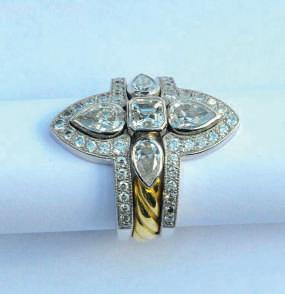







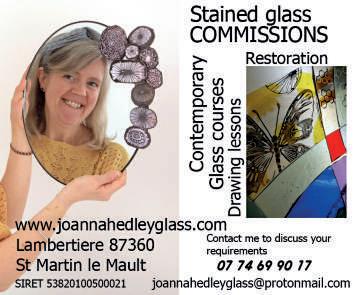









ONE
A twist on a French classic, guaranteed to warm you up on a cold day!

Ingredients (Serves 4-6)
3 large onions
2 leeks, including the green parts
75g unsalted butter, plus a bit extra
25g plain flour (farine de blé)


950ml chicken stock
120ml port (I use Porto Cruz Malaga)
1 small baguette
200g cheese of your choice, crumbled or grated
1 tbsp cream or crème fraîche
Method
1. Chop or thinly slice the onions and leeks. Melt the butter in a heavy bottomed pan and sauté the vegetables until the onions are soft and lightly browned – about 20-25 mins. Add more butter if required.
2. Dust the vegetables with the flour and stir until they are well coated, then add the seasoning. Cook for a couple of minutes, increase the heat and add the stock - stir until thickened. Now cover the pan, reduce the heat to low and simmer for an hour stirring occasionally. Stir in the port and simmer uncovered for another 20 minutes or so.
3. Aim to make the croûtes about half an hour before serving. Preheat the oven to 180ºC/160ºC fan. In a bowl, mix the cheese with the cream (this can be made in advance and kept in the fridge). Cut the baguette into 1cm slices and toast in the oven on a baking tray until crisp and golden brown. Spread a generous amount of the cheese mixture onto each slice and return to the oven for 5 minutes or so until the cheese is bubbling and golden. Ladle the soup into bowls, arrange a croûte in each and serve with a sprinkling of chives or parsley.
Melt-in-your-mouth aubergines, creamy ricotta, parmesan and tomatoes come together in this delicious meatless bake. Ingredients (Serves 2-4)

500g aubergines, sliced Flour for dusting Oil for frying 350g onions, chopped 350g tomatoes, skinned and chopped or tinned chopped tomatoes
2 eggs
125g ricotta
2 tbsp plain yoghurt
1 tsp dried oregano 50g parmesan, grated
Salt & pepper
Method
1. Dust the aubergine slices with flour and fry them a few at a time in hot oil until just brown and soft – about 2
OF
IS BEING
TO COOK
ARE
OF MY
Belinda, the ‘Accidental Chatelaine’ loves to cook at any opportunity and is delighted to be able to share that love with you

This is a lighter version of the deeply traditional French “Coq au Vin” with just a hint of orange. It’s very easy to make and creates an impressive dish.
Ingredients (Serves 6)
12 small chicken thighs
www.chateaumareuil.com
minutes each side. Drain them on kitchen paper.
2. In the same pan, fry the onions for 3-4 minutes until translucent. Add the tomatoes and cook for about 10 minutes until the mixture has reduced to a thick pulp. Set aside to cool for a while.
3. Preheat the oven to 180ºC /160ºC fan
4. Beat the eggs together with the ricotta and yoghurt. Add the cooled tomato and onions and season with salt, pepper, and the oregano.
5. Lightly grease a small ovenproof dish. Put in a layer of aubergines, cover with some sauce, and sprinkle with a little grated parmesan. Continue in this way finishing with a generous sprinkling of cheese.

6. Bake for 25-30 minutes until bubbling and irresistible!
3 tbsp plain flour (farine de blé)
3 tbsp olive oil
3 onions, peeled and cut into 8 wedges
200g smoked bacon lardons
3 garlic cloves, peeled and sliced
300g mushrooms, sliced thickly
2 bay leaves
2 tbsp redcurrant sauce (or similar jam or jelly)
3 strips orange zest
300ml red wine
300ml chicken stock
1. Preheat the conventional oven to 200ºC /180ºC fan
2. Season the chicken with salt and pepper, then coat lightly in a little of the flour. Heat the oil in a large ovenproof dish and in batches, brown the chicken on both sides over a high
heat. Remove the chicken and set aside.
3. Reduce the heat and add the onions and lardons, then cook for 5-8 minutes until starting to brown. Add the garlic, then sprinkle in the flour and cook for 1 minute, stirring to prevent sticking.
4. Add the mushrooms, bay leaves, redcurrant sauce/jam/jelly, and orange zest strips.
5. Pour in the wine and let it reduce by half to concentrate the flavour. Then add the stock and season with salt and pepper. Bring to the boil again and return the chicken to the dish, making sure it’s well covered with the liquid.

6. Put in the oven and cook for 50 minutes or until the chicken is nice and tender.
I typically remove the skin before serving but this is not essential.
1. Up to the point where the chicken is returned to the dish, cook as above using the slow or multi cooker pan or a large sauté pan on the hob and use a bit less liquid than conventional cooking.
2. Slow cook for about 3 hours until the chicken is nice and tender.
1 ½ tbsp plain flour (farine de blé)
2 tbsp ground paprika
2 tsp caraway seeds
700g cubed pork (sauté de porc)
2 tbsp oil
2 cloves garlic, crushed
1 large onion, chopped
2 tins of chopped tomatoes
120ml strong pork or chicken stock
2 peppers of your choice, deseeded and chopped
120ml Greek yoghurt or crème fraîche (optional)
1. Preheat the oven to 180ºC/160ºC fan
2. Put the flour, paprika, caraway seeds, and seasoning in a large plastic bag.
3. Add the cubed pork and shake well until the meat is evenly coated.
4. Heat the oil in an ovenproof casserole suitable for the hob, or large sauté pan.
5. Add the onions and garlic and fry gently until softened. Add in the pork and fry until the meat changes colour. Stir in the tomatoes and stock, cover and cook in the oven for about 1 ½ hours. Add in the peppers and cook for a further 15-20 minutes until both the pork and the peppers are tender.
6. Top with yoghurt or crème fraîche to serve if liked.
1. Cook as above using the slow or multi cooker pan (or a large sauté pan) up to the point where the tomatoes are added.
2. Slow cook for about 4 hours until the pork is becoming nice and tender. Add the peppers and slow cook for a further 45minutes – 1 hour.

4 tbsp golden syrup or honey
1x 450g tin of fruit (apricot halves, pear halves, pineapple slices, etc)
14 approx. glacé cherries (optional)
Handful walnut pieces (optional)
100g self-raising flour (farine á gateau)
1 tsp baking powder (levure chimique)
100g caster sugar
100g butter or vegetable spread
2 eggs, lightly beaten Method
1. Preheat the oven to 190ºC/170ºC fan
2. Spread the syrup or honey on the bottom and sides of a lightly buttered
This croissant bread pudding is very simple to make and can easily be adapted to your favourite ingredients. (E.g. brioche or peanut butter as alternatives

Ingredients (Serves 4-6)
3 croissants (preferably 1-2 days old)
170g chocolate hazelnut spread
40g nuts of your choice, chopped
2 large eggs
250ml double cream (crème entière)
1tsp vanilla extract
¼ tsp sea salt
100g sugar (plus icing sugar for dusting)
Method
1. Heat the oven to 170ºC/150ºC fan. Lightly oil or butter a medium size baking dish.
2. Slice the croissants in half lengthwise then thickly spread one side with chocolate spread. Put the halves back together to make sandwiches and cut into 2-inch pieces then add to the baking dish. Scatter the top with nuts.
3. Whisk the eggs, cream, vanilla, sugar, and the salt together then pour over the croissant pieces. Gently push down the
1.2 ltr ovenproof dish. Arrange the fruit in the bottom of the dish, putting a cherry in the middle of each piece of fruit, scatter with the walnuts.
3. Sift the flour and baking powder into a bowl, add the remaining ingredients, then beat for 2-3 minutes until the mixture is soft and light. Spread the mixture evenly over the fruit.
4. Bake for approx. 50 minutes until a skewer inserted into the centre of the pudding comes out clean.

5. Remove from the oven and leave to stand for 5 minutes, then turn out onto a warmed serving dish.
Serve hot with custard, cream, or ice cream.
croissants so the custard starts to be absorbed.
4. Cover with aluminium foil and bake for 30 minutes. Remove the foil and continue to bake, uncovered, until the bread pudding is golden brown, has risen slightly, and the liquid has been completely absorbed, about 10 minutes.
Great with vanilla ice cream or custard!




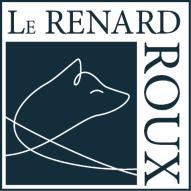




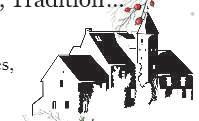
THE FRENCH HEALTHCARE SYSTEM IS GENERALLY RECOGNISED AS OFFERING ONE OF THE BEST SERVICES IN THE WORLD, BUT HOW DOES IT WORK WITH YOUR MUTUELLE?

Basically, the two are linked. So, in theory, everything is automatic!
If you do not have your carte vitale yet: The medical professionals give you a brown form (cerfa 12541 feuille de soins - médecin) to fill in and send to CPAM. See photo. So, you enter your social security number at the top of the page (usually a temporary one starting with 7 or 8) and sign at the bottom and send it to CPAM. As CPAM and Allianz are linked together by what we call “télétransmission”, the reimbursement goes directly into your bank account within 10 days. Therefore, we need your social security number when we set up the top-up health insurance contract.
Sometimes, the medical professional does not have the machine for the carte vitale or your carte vitale is playing up, so you could have to use the brown form even if you have a carte vitale.
When you visit your GP or other medical professionals, you first give them your carte vitale and then you pay
When you have your carte vitale: When you visit your GP or other medical professionals, you first give them your carte vitale and then you pay. The reimbursement is then automatically done by CPAM and Allianz thanks to the “télétransmission” link so the top up from Allianz follows within 10 days of CPAM reimbursement.
Attestation de droit: This is a letter that shows you are entitled to a carte vitale.
Sometimes, the “télétransmission” bugs and we need this letter to un-bug it. You can download it from your CPAM personal account (ameli.fr) or simply phone them and they will send it to you by post.
Tiers payant card: That is your top-up health insurance card. This card does not show your level of cover. It simply proves that you have top-up health insurance and gives information to the medical profession in case of a “prise en charge”this is when the top-up health insurance pays instead of you.
You can download it from your Allianz customer account.
Hospitalisation: When you are hospitalised, the hospital will contact Allianz, so Allianz set up “une prise en
charge” meaning Allianz and CPAM will pay instead of you (just as well as the surgery could cost an arm and a leg!!). The only thing you would have to pay for when you come out is the food, the individual room, and telephone or TV bill. Simply pass it on to us for reimbursement or send it directly to Allianz santé (remboursementsante@allianz.fr).
Pharmacie: Some of the medical profession such as “pharmacie” will ask for your top-up health insurance card and you therefore have nothing to pay as Allianz pays the “pharmacie” directly. It is called “tiers payant”. So, when you go to the pharmacie, you give them your prescription letter, your carte vitale and top-up health insurance card and all is paid for.
Surcharge: 100% top up cover is 100% of the price set by the French healthcare system, but the medical professionals are self-employed and are allowed to apply a surcharge. It is mostly done by consultants, surgeons, private hospitals, dentists, etc. Example: the French healthcare system set price for a hip replacement is 1000€ (not the actual figure, just an example), then you only get reimbursed 800€ (80%) and because the surgeon likes to go golfing weekends (joke!) and 1000€ is not enough for him, he can charge 3000€, therefore, you would be 2200€ (instead of just 200€) out of pocket! Therefore, a cover with your top-up health insurance at 300% would cover that surcharge.


Excess: There is an excess of 1€ per GP visit, 2€ for ambulance transport (not emergency) and 50c per medicine box. This excess is taken back from your CPAM reimbursement so this is why sometimes you get less reimbursement than you think you should have got.
Glasses: Most of my British customers go back to the UK for them or buy them online. But you can choose to have them covered under your top-up health insurance. Only one pair every 2 years. It’s a calculation to make between what you would get back and how much it increases your premium. Note that some glasses are now fully reimbursed under the new 100% santé reform and the glasses shop is obliged to give you one quote for 100% santé.
Dental cover: You simply give them your carte vitale and the reimbursement follows (for normal basic treatment).

Allianz.fr: From the Allianz website you can create your personal account. You simply need your surname, first name, date of birth, email, and contract number. Then you can view all your reimbursements, details of contracts, follow claims, send quotes, etc.

Extras: With Allianz top-up health insurance, depending on your cover, you can get extras like free cleaning if you are in hospital for more than 3 days or 2 hours of cleaning 48 hours after a chemotherapy session or even someone to look after your pets, etc.
If you don’t speak any French at all, there is an English speaking phone line created by the French healthcare system to answer all your questions
However, for crowns or major work, you first get a quote so you can first ask Allianz how much you can get back as dentists always surcharge. Note that most types of crowns are now fully reimbursed under the 100% santé reform.
www.ameli.fr: This is the website of CPAM on which you can create your personal account (you only need your carte vitale to do it). Yes, it is in French, but it is full of useful information. You can use the simulator to find out if you are entitled to CSS (people on low income can get free top-up health insurance or help to pay for it). You can download your reimbursement and you can ask for your attestation de droits (proof of cover). This document is often asked for by insurers to give you access to top-up health insurance. If you don’t speak any French at all, there is an English speaking phone line created by the French healthcare system to answer all your questions: 09 74 75 36 46 (from France) and 0033 974 75 36 46 (from abroad).
Also, you can get cover for an individual room up to 100 or 150€ (normal price is about 75€ so it’s plenty enough). In France, you either share the room with someone else or you can choose to be on your own like a hotel room (with your own bathroom). Note that the cover does not guarantee you will be able to get the room, it simply covers the cost if you can get one. Usually you can always get one in a private hospital (clinique).
CONCLUSION: Feel free to contact me if you require more information on any of the above or to get a free quote for top-up health insurance. Note that the law has changed now and as long as you have had a top-up health insurance contract for at least one year, you can swap at any time, no need to wait for the anniversary date, and if you are happy with my quote, I will do the cancellation for you!
And remember to check out our website www.bh-assurances.fr/en for all my previous articles (“practical information”) and register to receive our monthly Newsletter. You can also follow us on Facebook: “Allianz Jacques Boulesteix et Romain Lesterps”.
22 rue Jean Jaures. 16700 Ruffec Tél:+33 (0)5 45 31 01 61
10 Bd du 8 mai 1945 16110 La Rochefoucauld Tél:+33 (0)5 45 63 54 31

102 Avenue de la République 16260 Chasseneuil sur Bonnieure Tél:+33(0)5 45 39 51 47
2 Avenue de la Gare 16270 Roumazieres-Loubert Tél:+33(0)5 45 71 17 79
Marketing is a series of activities a business does to stimulate the buying of a product or service.

It's easy to react to an economic downturn and not market your business. However, retracting or stopping marketing or promoting your business allows competitors to outshine you. Purchasers still want to buy and need services, but they will be careful where and what they spend their money on. Businesses that continue to engage and connect recover much better from downturns than those that don't.
There isn't an industry that has not been affected by the continuous rise in costs. These costs need to be factored into business models to remain profitable. Each business has challenges that need to be addressed over the coming weeks/months to survive. Rather than axe your marketing to save money, take a more strategic approach to fuel a flow of enquiries and sales.
Purchasers will think long and hard about with whom and where they spend their money. How will you market your business and stand out? Marketing will need to match the mood of the moment. As well as drilling down on how you spend your budget, there are a few things to look at in closer detail:

▪ Your marketing needs to show existing and potential purchasers why they should spend their money with you.
▪ How can they trust you during these difficult times? What review assets do you have to showcase that you are better than your competitors?
▪ What value are you offering to existing and potential purchasers?


▪
While considering the suggestions above as you adjust your marketing plan, consider what is in your marketing arsenal.
▪
Are your printed ads relevant? Do they need to be refreshed to reflect who and what your business stands for during challenging times?

▪
Are your website and any other digital platforms updated? How are you using these spaces to share value and trust?
▪Keep social media fresh. Posting pretty pics is no longer enough. Why should potential purchasers be spending money with you? What is it that you are providing over and above self-promotion?
▪ Is the customer service side of your business meeting client needs? Are you offering payment options and loyalty programs?
Marketing is the activity that helps you connect to existing and potential purchasers, whatever the economic climate. Therefore it is much better to be smarter with your marketing during a crisis than not doing anything at all.
One of the biggest things standing between us and our financial wellbeing is procrastination. And that’s because we are really skilled at putting off the things that we should do, and instead focus on the things we want to do. “I know I need to save more, but right now I’ve got all these other things I want to spend my money on.”
There’s always a difference between how we think we’ll behave in the future, and how we actually behave in the present. We also dramatically underestimate the impact emotion has on our decisions –particularly when it comes to our finances. Research shows that more than 2/3 of Europeans procrastinate about their finances.

When it comes to investing for your future, it’s easy to find reasons to delay saving and planning, but the one friend you have on your side is time – and the longer you procrastinate, the harder it is to make up that lost time. Procrastination is a long-term money killer. If you wait too long to invest, you’ll quickly find yourself having to take a more aggressive approach to investing than you’re actually comfortable with. In turn assuming more
risk in an effort to meet your future retirement objectives.

Starting to invest as early as possible is highly recommended, and there’s never a bad time to start saving for your retirement. When it comes to setting aside money for your future, don’t fall into the procrastination trap. Unless you absolutely need every penny that you currently earn for expenses, make a point of setting aside a manageable portion of every paycheck in a savings vehicle.
During your peak earning years, it’s important to save as much as possible for the future. There’s nothing wrong with working for as long as you like, as long as you enjoy doing so.
However, generally speaking, the younger we are, the easier it is to work harder or learn new skills to earn more money – this is why it is so important to maximize your savings for retirement while you can.
Make life easier for yourself in retirement by starting to save as much as possible, as early as possible.
Another great reason to start saving as early in life as you can is a force known as compound interest. While saving is a good idea at almost any age, the power of compound interest goes a long way, and the earlier you start saving, the more promising your financial future should look. Your money also grows much faster than it would otherwise, and this is most noticeable over longer periods of consistent investing.
While the amount you can put away for your retirement each month is important, it pales in comparison to how much time you should invest in your financial planning as a whole. In other words, the sooner you start, the more money you can potentially build over the long haul.
My recommendation is… don’t procrastinate. Start today!
It’s easy to find reasons to delay saving and planning
There is an extension of the 30 cents per litre state discount on both diesel and petrol which was due to end on the 1st of November. It was due to reduce down to 10 cents per litre on the 1st of November but has been postponed thanks to the refinery strikes pushing the prices up. The state discount is due to stop altogether on the 31st of December. TotalEnergies are also prolonging their 20 cents per litre rate until mid-November. Stay up to date with the best fuel prices in your area on this website: www.prix-carburants.gouv.fr

Thanks to an ongoing shortage of paracetamol, France has now limited the purchasing of the pain reliever to two boxes per person. This also applies to people with a prescription. The ANSM (Agence nationale de sécurité du médicament et des produits de santé) recommends if you do have to take it (and your situation allows it), take one dose three times a day every eight hours, rather thanonedosefourtimesadayeverysixhours.

Don’t forget there are two bank holidays in France this month. The first is Toussaint, which this year falls on a Tuesday. The second national holiday is Friday the 11th of November, to mark Armistice. Ask your mairie or neighbours about the ceremony, they are always grateful of anglophones attending. Don’t assume starting times as they can vary from commune to commune. The ceremonies are usually followed by a light apero in the salle de fêtes.




Many readers will have signed up to Bloctel, the list which allows households to ‘opt out’ of cold callers. While some have found it hasn’t stopped the calls coming through, there’s hope that a new decree passed will help deter some of the unwanted calls. Companieswillberestricted as to when they can contact prospectiveclients,withcalls only allowed from Monday toFriday,between10amand 1pm, and 2pm and 8pm (unless the customer has
requested otherwise). Calls on bank holidays are also banned. The decree also bans companies from calling the same person more than four times during a 30-day period. When you are speaking to a cold caller and tellthemyounolongerwish tobe contacted,theywill be obliged to wait 60 days before trying to call you again. If you haven’t already signed up for Bloctel, the process is online and very simple,andworth ago!Visit: www.bloctel.gouv.fr.
Agnés Pannier-Runacher, France’s Minister for Energy Transition, unveiled the country’s energy saving plan.
The plan is not only to help us reduce costs in our homes but also forms part of the climate change plans to decrease energy consumption over the next two years. (The aim is for an overall reduction of 40% by 2050.) The government is asking everyone to consume less electricity during peak hours in the morning and evening. As we head into winter, here are a few tips that might help reduce your monthly spending.
An energy-efficient home will keep you comfortable while saving you money. Whether you take simple steps or make larger investments to make your home more efficient, you’ll see lower energy bills. Over time, those savings will typically pay for the cost of improvements and put money back in your pocket. Your home may also be more attractive to buyers when you sell.
1. If you can, keep your heating to a maximum of 19° in the house and 17° in bedrooms.
2. Check the peak and off-peak hours with your energy provider and try to use as much of your consumption during the off-peak hours. Many modern-day appliances have timers (e.g. start in 7 hours’ time)
3. Wear warmer clothes and use blankets rather than put the heating up, it’s free!
4. Close your shutters at nighttime (draw curtains if you have them) and make sure you open everything up
By Gayle Feaseyagain during the day, so you let any warmth from the sun in.
5. Use draught excluders on doors, particularly ones that lead into a cooler room or area.
6. If you haven’t already taken up the insulation offers available, do it now! Shop around, ask friends for recommendations or speak to your mairie for advice. Insulating empty loft spaces or the ceilings of basements will make a big difference to your home in winter and summer.

7. If you’re looking at replacing your current central heating system, you may benefit from a government grant. Check your eligibility here on the government’s ‘France Rénov’ website: www.francerenov.gouv.fr/aides/simulation
8. Sounds obvious, but turn off unused lights or appliances!
9. Change to LED lightbulbs, they cost a fraction of the price.
10. Use the ‘eco’ mode on your appliances. Many modern day appliances have this option. For many appliances (dishwashers, washing machines etc) it’s the heating up of the water that creates the high energy consumption. Unless your clothes are really dirty, experiment with 30° washes, or better still, cold water washes. Just because they might run for longer doesn’t mean they’ll cost more. If your appliance is old (for example, over 10 years) it might be time to invest in a new one. Appliances have advanced in recent
years so while you’re initially paying out you won’t be using an older energy-consuming model.
11. Only use appliances when they are full (e.g. your dishwasher and washing machine).
12. Choose your washing days. Ideally, every laundry day would provide sun (heat), dry air (low humidity) and wind (agitation), but we all know that’s not reality where we live. There is really no minimum temperature for drying clothes, as long as the air is dry enough. Even in freezing temperatures, your clothes will dry eventually! If the weather is dry and the air isn’t too damp, you can dry your clothes outside throughout the winter. Just remember do to this earlier in the morning, as you’ll need a lot more drying time.
13. Drying indoors. Drying your laundry on radiators can create indoor pollution by releasing volatile organic compounds (VOCs) into the air. Chemicals from fabric dyes, detergent, fabric softener etc can evaporate into the air as a result of being heated on or near a heat source. If you have to dry your clothes inside, always put them on an extra spin so they are as dry as possible before you bring them into the room. Ideally you need a window open to provide ventilation.
14. Regularly defrost your freezer and remember that keeping it full is more energy efficient.
15. Defrost frozen food in your fridge rather than at room temperature, it
WITH THE PRICE OF JUST ABOUT EVERYTHING INCREASING, HOW CAN WE REDUCE OUR SPENDING AS WINTER APPROACHES?
Even in freezing temperatures, your clothes will dry eventually!

will lower the temperature of the fridge.
16. If you’re using a conventional oven for cooking, try turning it off about 10 minutes before it’s done, the residual heat will be enough for it to continue cooking.
17. Check the seals on your fridge, freezer and oven.
18. Putting a lid on your pots and pans while cooking makes your food cook faster, therefore saving energy. (Note: if you’re trying to reduce a dish or sear it, it won’t work with the lid on.)
19. Use the right size hob for the job! If you see any of the electric ring or gas flames, you’re heating up the air, not your food.
20. Once you’ve finished using an oven, leave the door open to heat up the kitchen.
21. Take showers not baths.
22. Then reduce your showering time! If you can, set your timer for 4 minutes. Or even better, follow the Wim Hof cold shower method!
23. We covered this in last month’s edition, but now is the time to get out your slow or pressure cooker if you haven’t already. Slow cooking food uses far less energy than a conventional oven. Slow cookers are available from as little as 30€ or you can look in the charity shops as they often turn up there. (New year can be a good time to check.)
29. Some foods can be soaked overnight (for example, dried beans), this reduces the cooking time by around 20 minutes.
30. Soaking rice in cold water for half an hour should reduce the cooking time by around 20%. Not only this, but if you are cooking a fragrant rice (basmati, jasmine), soaking the rice will also help improve the flavour, which is lost during the heating process.
While reducing our energy consumption is a huge part of money saving, there are other ways we can all cut back.
31. Avoid buying new. Check out the second-hand market for bargains.
32. Use charity shops. Not only can you find yourself a real bargain, you’re also helping charities. Most towns have a Croix Rouge or Secours Populaire vestiboutiques. (Our daughter found a pair of Gucci trainers at Croix Rouge!)
33. Buying secondhand clothes. Again, charity shops are a great place to look, but there are online options too. If you haven’t tried Vinted.fr yet, you should! Facebook market place is another good option.
Make the most of the governments grants available for low income families
24. Get batch freezing with food! This is a great way to economise. Make enough food for more than one meal, batch it up and store in the freezer.
25. Invest in an induction hob, these use less energy than a gas or electric hob.
26. Check out energy suppliers costs, by switching providers you can instantly reduce your bill. (Remember, the government energy caps are only valid for EDF and Engie - if you use another provider you need to check their tariffs and your contract.)
27. Kettles consume a lot of energy so only boil what you need!
28. Descale your kettle. Limescale means your kettle has to boil longer. No need for expensive cleaning products, just buy a cheap bottle of white vinegar. Add around 1 cup to your kettle and set to boil. Leave to cool and rinse well.
38. Join a scheme like Emrys. A cooperative of consumers that combines the purchasing power of its 180,000 members to negotiate discounts with 100s of high street and online retailers. If you would like to contact one of the few anglophone members you can do so via Facebook: www.facebook.com/emrysfaitsimple
39. Make a meal planner every week. This simple task can make life a lot easier and allows you to plan your food, it also stops you from buying impulsively in supermarkets.
40. Make a shopping list of the items you need every week and stick to it.
41. Remember to take the list with you!
42. Don’t shop on an empty stomach. You’ll be listening to your belly, not your purse or wallet.
43. Purchase the supermarket’s own brands and look out for weekly promotions.
44. Sign up for the supermarket’s loyalty cards and take advantage of their offers.
45. Use coupons for discounts. Check out websites like Groupon for savings.
46. Understand your spending habits. Do you regularly go though your bank statement? Cancel any unessential or forgotten monthly subscriptions.
34.Sell unwanted items. Have a good look through your home, barn and wardrobe for items that are sat there gathering dust or unused. Now is the time to sell them on!
35. Make the most of the governments grants available for low income families, which can go towards your bills for electricity, oil or gas. If your monthly income is below SMIC and you haven’t received a cheque towards your bill, visit: www.chequeenergie.gouv.fr
36. Low income families should also contact their local CAF office, you may be entitled to food vouchers and other benefits.
37. Reduce your supermarket spending. We’ve all noticed the increase as we go through the check out, so it’s certainly worth paying careful attention to what we’re putting in the basket. Choose your supermarket wisely. Lidl and Aldi tend to be the most affordable options, followed by Leclerc and Intermarché, while Monoprix, Casino and Auchan usually rank among the pricier options. Use the Que Choisir website to find your cheapest local supermarket.
47. Take advantage of trial periods. Many services offer a try before you buy option. Make sure you set a reminder (e.g. on your phone) to cancel it though.
48. Switching suppliers. As with the energy suppliers, check all your providers are giving you the best deal. For example: mobile phones, broadband, insurance policies and breakdown cover. Check on price comparison sites. It may feel too time consuming, so try setting a target like one a month.
49. If you are self-employed, chasing up unpaid invoices can be timeconsuming and frustrating. Remember you are entitled by law to implement late payment fees to late payers. This way, they might be more inclined to pay you on time and if they don’t, they’ll have to pay extra.
50. No spend days. In these digital times it’s very easy to spend money every day. Try implementing a strict nospend day once a week.
Many of these tips feel like small savings but they will make a big difference at the end of each year! If you are really feeling the financial strain, talking to someone about it will help and they may have suggestions or know of ways to help you.


Sound familiar?
When we drink caffeine first thing in the morning, our body is just coming out of a fasting state and is sensitive to the stimulating effects of caffeine. For some people it can be too much since caffeine is a diuretic, robbing the body of much needed water at a time when hydration is the most important thing.
There is another way….
Each night we lose around 2 litres of water in our sleep, through sweat and exhalation. We are in need of hydration when we wake up. It’s great to have a glass of water on waking, but not all water is equal. Tap water contains a number of different chemicals depending on where you live.
Many of us have heard that fluoride is not good for us but health and nutrition can be a confusing world and there is a lot of conflicting information out there. Fluoride is in toothpaste, it is in mineral water even, and it’s promoted as a factor in healthy dental care.
Fluoride is believed by some to be implicated in many illnesses, including cancer, osteoporosis, and behavioural disorders, among others. Chlorine is in tap water and used to kill off pathogenic bacteria, which is obviously a desirable effect, however when chlorine is ingested the byproducts of chlorination (called trihalomethanes) it could cause damage to major organs and be detrimental to the healthy bacteria in our gut. Traces of antibiotics, pharmaceutical medications, and agricultural chemicals are all found in tap water.
Ideally we will use a high quality water filter for our drinking water, like the Berkey water filter. If this is outside of your budget then a simple Brita water


filter is a great way to filter out many nasties and protect your health.
We need electrolytes in the body for cells to function normally. Electrolytes are minerals that carry an electric charge, like sodium, potassium, and magnesium. They are naturally present in micro-quantities in mineral salt/sea salt. We have access to some fantastic sea salts here in France, readily available from all supermarkets.
When we leave water to stand overnight, the chlorine in it will evaporate which removes one toxin.
Each night before you go to bed, filter one jug full of water and leave it to stand on the counter with a small pinch of sea salt dropped into the jug. The electrolytes in the salt will disperse throughout the water.
When you wake up, feel free to add a squeeze or slice of lemon for an immunity boost of vitamin C.
Drinking the salt water first thing, at room temperature, won’t shock your stomach with cold which is not good for you. Salt water can stimulate the release of salivary enzymes (amylase) which aids digestion. It is also great for oral health, has been shown to be an aid in weight loss and can help to reduce muscle cramps. Of course the major benefit is that you will hydrate your body and replenish salts immediately on waking, which sets you up for the day and reduces the harm from the diuretic effects of the tea or coffee which will follow.
Just follow these simple steps:

● Fill a two-litre jug with salted water, with or without lemon juice.
● Take one large glass of water on waking. Allow 10 minutes to hydrate and wake the body up.
● Drink the rest throughout the day.
Amanda is a Naturopathic Nutritionist with specialist knowledge in gut health, depression & anxiety, pregnancy & breastfeeding and type 2 diabetes. You can book for a consultation with Amanda on her website or email with your questions (see advert below).

Note: after your morning rehydration glass, make sure you drink the rest of the two litres throughout the day. Ensure you finish it by the end of the day before you refill it for the next day. A handy way to make sure that you stay hydrated all day long and get your two litres of clean water, every day.
This article is not intended to be a substitute for professional medical advice and should not be relied on as health or personal advice. Always seek the guidance of your doctor or other qualified health professional with any questions you may have regarding your health or a medical condition.







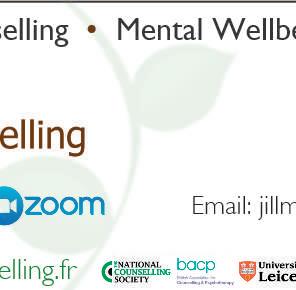









 By Ronnie Ogier
By Ronnie Ogier
Ronnie is a passionate gardener and now loves sharing her years of experience of success and failures in her own garden and sharing it with you. Also a keen runner, having been bitten by the ‘Couch to 5K’ bug!

T
he days are short, it’s a time of year which can be wet and frosty, and not good for working the soil. Added to all that there are not many plants visible to enjoy or work with. But most gardeners can always find something to improve, correct, or invent to obtain a better result and be more successful - the gardener’s mantra is ‘there’s always next year’. Now you should have the time to consider how to move forward for the good of your garden and for the wider environment. This can offer some motivating challenges and be a positive way to occupy the dull, damp, dreary days of November.
The secret of a beautiful healthy garden lies in the acceptance of nature by promoting biodiversity, by protecting the soil with mulching, and by planting plants adapted to the pH of the soil, its nature, and your micro-climate. Respect for the
environment is of crucial importance to us. This does not mean stopping the use of fertilisers, as these feed plants or soil in order to provide additional nutrients that can be assimilated more or less quickly.
Fertilisers are referred to regularly, often without explanation. There are two types of fertiliser, mineral and organic:
The gardener’s mantra is ‘there’s always next year’
mineral fertilisers are specially formulated to be adapted to more general needs, and contain 3 main components: nitrogen (N), phosphorus (P) and potassium (K). Chemical fertilisers must be used with care and the recommended doses and conditions of use must be respected if you don’t want to get a nasty surprise!
These are elements of natural mineral origin - potash, phosphate, etc, or produced by the chemical industry. They provide the plant with directly assimilable minerals and therefore have a "whiplash" action. The so-called "simple" mineral fertilisers provide only one element at a time, while the majority of synthetic
They are mainly derived from natural, plant, or animal waste. They are used in bottom fertilisation and gradually release nutrients such as nitrogen, potash, or phosphorus but also trace elements essential for the good health of plants. Since assimilation is slower, there is no risk of leaching.
The main organic fertilisers of plant origin are: various plant manures (nettle,
NOVEMBER CAN BE QUITE A DIFFICULT TIME TO GET INTO THE GARDEN FOR ANY LENGTH OF TIMEPlanting mustard as green manure










comfrey...), green manure that is buried in the soil after cultivation (mustard, vetch, phacelia...), and green residues, composted or not (dead leaves, lawn mowings, algae , etc.),
The main organic fertilisers of animal origin are: crushed or roasted horn, manure, dried blood, and guano.
The environmentally friendly gardener will prefer to focus their activity on crop rotation and organic fertilisers, but it is not necessary to demonise mineral fertilisers which, used in a controlled way, will be beneficial to plants. As you can see, it's all about measurement and balance!
In previous articles I’ve talked about plant manures and the making and use of nettle and comfrey teas which are used to ‘feed’ growing plants. I regularly extol the virtues of manure and compost, but I have to admit that green manures were a bit of a mystery to me – people used to talk of them but rarely explained what they were and how they worked. So, in the rest of this article I’ll try to explain a bit about them.
In essence green manures improve soil structure and fertilise it while providing cover against weeds and reducing nutrient leaching. Sometimes they even attract pollinating insects and can be considered as essential to the garden, particularly the vegetable garden.
There are different types of green manure - vetch, clover, field beans, alfalfa – and it’s not easy to work through the vast family of green manure! To simplify this there are two main types of green manure:
1. Green manure whose root system has nodules. These swollen parts contain bacteria capable of capturing atmospheric nitrogen and transforming it to make it available in the soil and plant tissues. Fabaceae (legumes) such as lupine, alfalfa, vetch, pea, field beans or clover have this ability. These green manures will be used to enrich the soil with nitrogen, structure it and cover it. They will be ideal before growing leafy vegetables as part of crop rotation in the vegetable garden.
2. Green manure with a dense and deep root system. This root system allows them to draw mineral nutrients from deep in the ground and make them available on the surface as they decompose. These plants structure the soil, allow better penetration of water and air, and depollute the land. Mustard, buckwheat, rye, phacelia, and oats are among them. Some of these plants are a very good carbon supply once buried.
Starting from that piece of knowledge, consider what you want the green manure to do for your garden, and when you will use it. For example:
● to use between two crops, choose one for rapid growth! White mustard comes first, followed by phacelia, buckwheat, field beans, vetch, and oats.
● to cover the soil over a longer period of time, consider rye, purple clover, or lupine.
● to prevent unwanted weeds, opt for phacelia, mustard, alfalfa, buckwheat, or rye.
● to protect from frost, plant field beans, lupine, alfalfa, purple clover, or rye, and avoid other green manure that is more sensitive to cold.
● to attract pollinating insects, choose alfalfa, clover, mustard, and phacelia.
● to reduce nutrient leaching and soil erosion, plant purple clover or vetch.
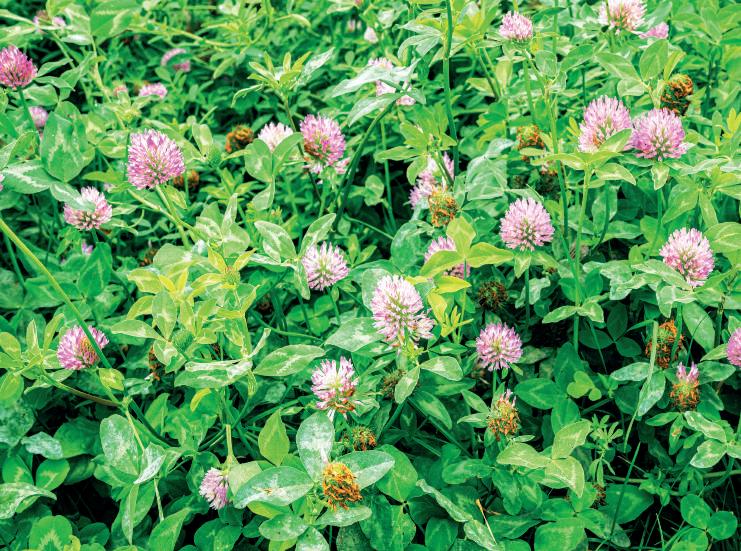
● to provide a good carbon supply after burial, consider grasses such as oats, rye, or buckwheat.
Having decided the purpose of the green manure to be used, also consider the nature of your soil, particularly the pH level, because like all plants, green manures have growing preferences. Next calculate the date of sowing as this may not always match the time when the previous crop is harvested. Some green manures have a long growing cycle and may not fit between other crops. In any of these cases, find a different green manure with a shorter life cycle. Some green manures do not tolerate cold, others drought, so they must be sown at the right time in order that they can grow quickly and give the best of themselves. Linked to
this, the green manure should not be of the same family as the previous crop and if possible, should prepare the soil for the crop to follow. For example, you can sow field beans, lupine, or alfalfa in preparation for a future crop of nitrogenhungry leafy vegetables.
A popular technique is to sow mixtures of green manure. This technique ensures better coverage because, in case of a problem in one variety (pest attack, climatic concern etc.), the others will take over. Biomass production will be better and nitrogen fixation improved. Seed mixtures are generally less expensive than simple seeds. It is also possible to make your own mixture according to the nature of the soil, the climate, and the previous and following crops. To create the right mix choose species with different root systems; prefer a herbal mixture with different structures (prostrate, slender etc ...); always, associate plants with the same needs and whose seedlings will grow at the same time. Oats and vetch, clover incarnate, and ray grass from Italy, or shuttle and rye will all work together.
When a crop has finished and been removed from the ground, prepare the soil by raking to give a fine tilth, sow the green manure seeds, and tend as instructed. Once your green manure has flowered but not yet set seed, cut it back, leave on the surface for a couple of weeks to die, and then turn it into the soil for final decomposition. In this way you will be returning a great deal of goodness into the soil and improving the ground for future crops. No-one ever said gardening was easy!
It is not necessary to demonise mineral fertilisers which, used in a controlled way, will be beneficial to plants



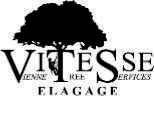








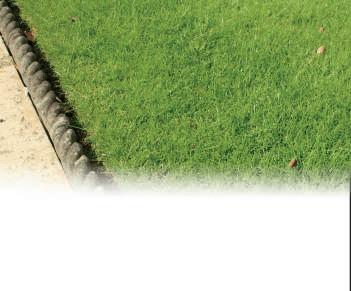

Caroline has been a lecturer in horticulture for 20 years and now runs a nursery and ‘garden craft’ courses in the Haute-Vienne at Le jardin créatif

I
recently read a quote by Piet Oudolf (whose prairie style planting schemes I discussed in my September article) that said ‘A plant is only worth growing if it looks good when it is dead’ and while this should not be taken literally or as a blanket rule for planting, it is well worth thinking about how to incorporate the wonderful seed heads and faded foliage for autumn and winter interest into a planting scheme.
Many plants hold onto their seed heads for several months and in fact their interest goes on far longer than that of the more transient flowers. They not only look
attractive, but many will provide seeds for the birds during the hungry months.
This year after the prolonged period of drought I have had to cut back hard many of my herbaceous perennials earlier than usual, because they looked so tatty, but here are a few that still look great right through into the late winter.
Sisyrinchium striatum this hardy herbaceous perennial is stunning in mid sprint time, sending up spikes of butter yellow flowers and forming good clumps of strappy leaves fairly quickly. As the flowers fade and the seed heads form they turn a dark
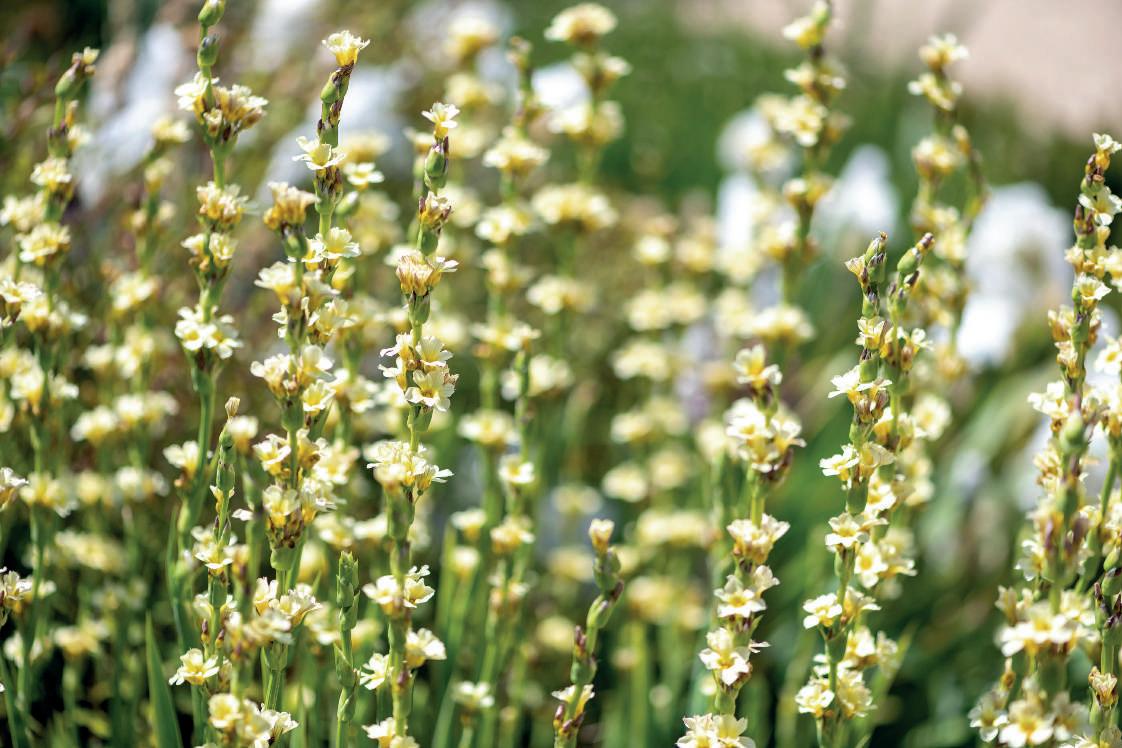
chocolate colour which is striking in itself and complements the bronzes and golds of other autumn colours so think about planting them within ornamental grasses.
Echinacea purpurea – one of the stars of mid to late summer with its heads of purple flowers topped with a dome of shimmering deep copper, once they fade they also turn almost black and create a structural deep contrast to more airy planting around them such as Salvia, Ceratostigma and Asters.
Phlomis russeliana is probably one of the best seed heads in terms of longevity. During the early summer the tiered yellow flower heads rise tall above a low crown of large hairy leaves. When the flowers fade
Caroline WrightLe jardin créatifSEED HEADS HOLD THE EYE AND MAINTAIN VISUAL EXCITEMENT AT THE LOWEST POINT OF THE YEAR IN THE GARDEN
They not only look attractive, but many will provide seeds for the birds during the hungry months
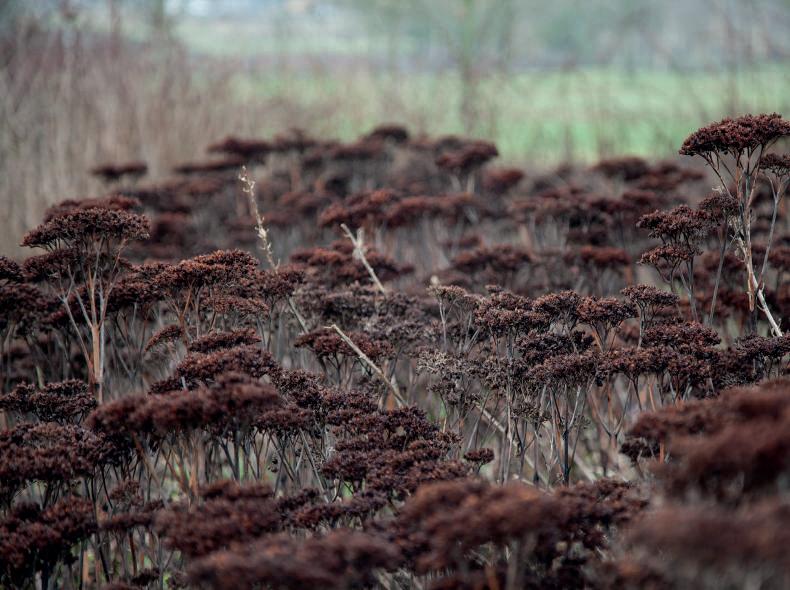
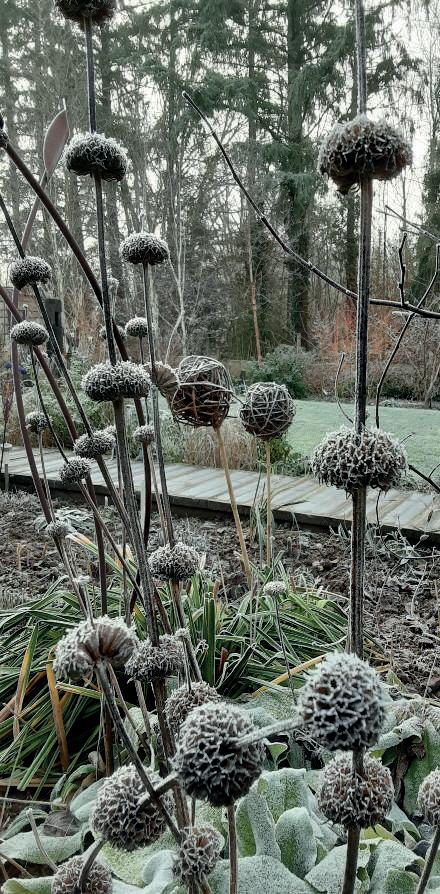

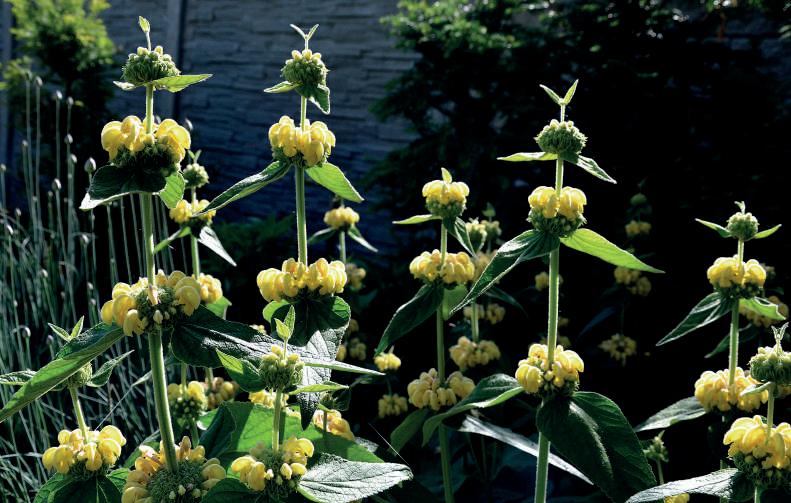


the seed heads dry out to a deep buff brown colour and remain throughout the winter and even into the next season if you don’t cut them back. On sparkly frosty mornings they are covered in a million crystal jewels and are a stunning winter wonder.
Penstemon ‘Mystica’ – also known as the ‘Foxglove penstemon’ because of its pale lilac bell-shaped flowers on a tall spike - is one of the herbaceous Penstemons. Many of the well-known varieties are what we call sub shrubs, which refers to the fact that they are sort of half-way between a shrub and a herbaceous perennial, forming a quite woody base but tall, soft herbaceous stems bearing the flowers each year.
The herbaceous Penstemon do not form a woody base, but die back to ground level each year for the dormant season, and although ‘Mystica’ retains a few semievergreen leaves at the base of the plant all winter, the flower stems and attractive seed heads turn a deep burgundy/brown and remain on the plant until they are cut back or the winter weather breaks them down. They make a nice addition to a vase of cut flowers too but I like to leave them for winter interest in the border.

flower head in the centre, similar to the echinacea, although Rudbeckia ‘Goldsturm’ is on a smaller scale at around 40-50cm tall with a ring of golden yellow petals at the base of the central dome.
‘Green Wizard’ is much larger, reaching over a metre and bearing unusual flowers without petals and a tall central dome. Both result in dark seed heads that persist well into the winter.

Sedum spectabile ‘Autumn Joy’ – now renamed as Hylotelephium spectabile, has long been a favourite of autumn with its dense, flat heads of deep flowers loved by the butterflies. They turn a dark burgundy and then to a burnt umber.

They make a nice addition to a vase of cut flowers too but I like to leave them for winter interest in the border
Towards the end of the winter after being battered by frost, rain, wind, and maybe snow, your seed heads will start to look a little jaded, so I normally start cutting them hard back in February before the early March sunshine triggers the new growth for the coming season. If you are lucky you may also get some selfseeded new plants that will begin germinating after the cold winter weather has broken the dormancy, so take care when weeding your borders at the start of the season.
Crocosmia ‘Carmine Brilliant’ – many of the crocosmia produce structural seed heads once the flowers fade, but this one is my favourite, developing large, rounded pods all along the stem that retain a deep red/purple colour and also look good in flower arrangements.
Sedum is one of the stalwarts of the autumn border, and as its crimson flower heads turn to deep chocolate brown as the stems fade, they dry out and look fantastic.
Rudbeckia ‘Goldsturm’ and Rudbeckia ‘Green Wizard’ – both of these summer flowering daisies, have a domed composite
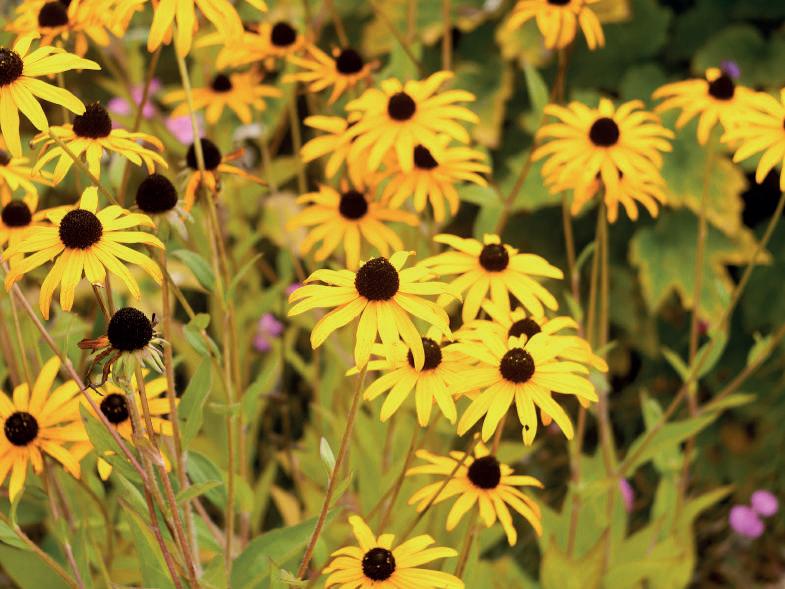
Our nursery is now closed for the winter season, but you can still browse our plant list online and order plants for collection during this period. We will be running our usual Christmas wreath workshops during late November and December.






The dog got out of being part of a dogpack and became a member of a surrogate human-pack, with free food, sometimes affection, a degree of security, and a sense of purpose. Mankind got a very useful companion, able to do all sorts of work that Mankind couldn’t, like rounding-up other animals, hunting by scent, defending the “pack” fearlessly. Other talents emerged gradually; a talent to detect drugs and explosives by scent was not high on primitive man’s requirements list.
Whatever dogs started out as (probably a relative of the wolf, now extinct), Mankind soon found that one of the dog’s talents was to adopt a wide range of shapes and sizes that could be bred-to quite easily and then retained by careful mating. No other animal has the ability to produce such a range of shapes within the same species –all these animals can mate with each other to produce viable offspring.
There are obvious problems with this. Someone asked our late Queen how it was possible to achieve the mating between a
Corgi and a Dachshund that produced her cherished Dorgy. "Oh,” Her Majesty is supposed to have replied, “We have a little brick.”
The result of this quirk in dog reproduction is that Mankind found he could breed an enormous animal for heavy lifting, haulage, defence, rescue etc, a moderate-sized dog for general work, hunting etc., and tiny dogs to go where Man could not, for example down small holes after small game. By mixing varieties one could start again with a fresh palette.

Also, you could breed for different temperaments, which was particularly important when some varieties worked within the family environment while others were required to be aggressive.
Initially, no doubt, the dogs did the crossbreeding themselves, and Mankind selected the resultant characteristics that best fitted his needs. Eventually breeding became an end in itself. Down the centuries, certain varieties of dog were given names and could be highly prized for their ability to perform their tasks. However, the idea of pedigree breeding did not really take off until the middle of the 19th century. Formal dogbreeds have existed for less than 200 years!
Now there are roughly 320 to 400 different breeds of dog recognised internationally. This implies that there must have been many more varieties of dog, since the names of a number of oncedesirable varieties are known to history, but now are lost – we have no idea what most of them looked like or what they could do, but they had a purpose, which probably ceased to exist or be popular, and so the dog vanished also.

One obvious example is the turnspit dog. In most kitchens of any size, there was a roaring fire before which meat was roasted. Really roasted, not just broiled as a modern oven cooks it. Of course, this meant that the joint (and it was usually a big joint weighing 5 kilos, often much more) had to be rotated on a spit in front of the fire to ensure even cooking. Often the turning was done by a hapless boy, who might, if he was lucky and had a caring employer, be protected from direct heat by a water-soaked straw bale. Many of them would just be left to get scorched. Then someone had the bright idea of using a dog running in a wheel to turn the spit. The wheel was usually set high up to keep the dog from the heat and the worst of the cooking-fumes, and so the dog had to be fairly small, to allow easy lifting into its wheel, and for it to be able to run within the wheel, which would not have been over-large. Stamina was needed as well.
These poor creatures were called “Turnspits” and were small and shortlegged. Usually their tail was docked, both to keep it from catching in the mechanism and because that was what you did to dogs of lowly status. They were generally badly treated, often being encouraged to keep turning the spit by having a hot coal thrown at them from time to time. There must have been hundreds of them around. Then someone invented the clockwork spit. This was a metal cylinder about the size of a large Kilner-jar containing a clockwork mechanism that rotated a hook at the bottom, from which the joint hung. Now all you needed was someone to wind it occasionally. Turnspit dogs were now surplus to requirements, and very soon vanished.
Mike George is our regular contributor on wildlife and the countryside in France. He is a geologist and naturalist, living in the Jurassic area of the Charente
MANKIND HAS HAD A SPECIAL RELATIONSHIP WITH DOGS
We have no idea what most of them looked like or what they could do, but they had a purpose
What were they like? The nearest present-day dog for size and conformation seems to be the Corgi, but there is no evidence that the two breeds were in any way related. The Turnspit had a sharpish, turned-up muzzle and was usually brownish or fox-coloured. If you want to see one, there is a stuffed specimen in Abergavenny Castle Museum. A word of warning, should you be tempted to seek it out. It was evidently that rare thing, a loved Turnspit, since it has an intact tail. Moreover, experts are quite sure that this specimen of the taxidermist’s art is the first (and possibly only) attempt at preservation by this particular practitioner.
In the Middle Ages, the Talbot was a prized hunting-dog. There are depictions in contemporary book illustrations and paintings, and the Talbot was one of the only two dogs permitted to be used in heraldry (the other was the Greyhound). From these illustrations, it seems that the Talbot was a small to medium-sized dog, white in colour, with relatively short legs, a deep chest, a long, up-curling tail, and a longish muzzle.

When hunting became less popular in the 17th century the Talbot began to decline, and finally slid into extinction
The trouble is that that is about all we do know. Despite the dog’s enormous popularity, we do not know whether it was a scent-hound or a sight-hound, whether it put game up to be hunted or whether it killed it, whether it ran free or was a leash-hound. In a description of a hunt, one didn’t need to discuss the dog’s part in the sport; everybody knew what it did!
Even the name is obscure. There was a Talbot family, who had a Talbot depicted in their heraldry, but it is possible that the family took its name from the dog rather than the other way around! Talbot seems to have been a generic name for a type of hunting-dog from much earlier.
When hunting became less popular in the 17th century the Talbot began to decline, and finally slid into extinction. Some experts argue that the Greyhound and/or the Terrier are related to them. Certainly, the Talbot and the Greyhound are often referred to as a hunting pair, but this suggests they had contrasting roles in the hunt and were not descended one from the other. Maybe the Beagle is the relic of the Talbot. That might explain Snoopy’s vainglorious dreamings!
This was not really a breed as such, more a type. Small, adorable in a rather aggressive way, this was a dog designed to
have been quite small - smaller than a fox-hound - and to bring down a large animal would have required a concerted effort and some danger

go to dinner with. During the Georgian era particularly (i.e., Georges I to IV) meals could be gargantuan; the theory seemed to be that the more you ate, the more you could drink. The bulk of the meal tended to be carbohydrates and vegetables, and we all know what effect that can have. When it was a men-only do, it didn’t matter, but if it was a more select meal, with ladies invited, ways had to be found to avoid embarrassment.
Enter the Feisty Dog. A lady took her little doggie (that was why it had to be little) into dinner with her. When an obvious release of gas occurred, the lady affected would pick up her little dog and say “Oh, I am so sorry. Fifi has been a little unwell lately. Naughty Fifi!” and blushes were spared. Nobody would think of
The extinct German Bull-dog or Bullenbeisser, which merged into the British Boxer. It was of a similar size to the Boxer, and dark-coloured


challenging this explanation, yet everybody knew the truth.
The name? Well, “feist” was an old euphemism for that particular misdemeanour. Nowadays we use an even shorter, though alliterative, word.
Of course, the dogs, being small, were of the type to pick fights with each other, and to run around getting under everyone’s feet.
Thus, the term “feisty” came to mean argumentative, ready for a scrap, particularly if undersized, and this is its present meaning.
Oddly, the Americans have now produced a breed of dog that they call “The Feist”. It is small and nondescript, and isn’t, I believe, catching on over here.
I wonder why?
This tiny dog gave rise to an even smaller one – the Yorkshire Terrier. The Paisley was like a Yorkshire Terrier, but had short legs and a relatively long body. It was adored for its silky hair, which was its legacy to the Yorkie – but when the Yorkie became popular, the poor old Paisley faded into obscurity. We don’t know why, and there are none left to ask!
The Norfolk Spaniel Curiously, this dog appears to have been bred to hunt birds. It was grouped with the English Springer Spaniel for size, but was noticeable more broad-boned than is often the case with Springers. It was noted for its red black or brown colour-patches, had a curly coat with a rather pom-pom style tail, and was very popular in the 19th century, when bird-hunting was a popular sport. Why it died out so completely is a

A lady took her little doggie (that was why it had to be little) into dinner with her
tail. In fact, they seem
Indian Dog, possibly related to the Coyote. A packhunting animal, but very gentle and playful with people
mystery. Perhaps, as the old joke has it, the hunters couldn’t throw the dogs up high enough!
The Tahltan people of Northern British Columbia used this dog, which is actually quite small, to hunt bears. It was a chunky-looking dog with a well-developed muzzle, white with a blackish head with pricked ears. The tail was carried high, in a pom-pom. Though quite strong, they never actually brought down any bears; their job was to track the bear and then bark and yap to confuse it and mark its position until the hunters arrived. They must have been gutsy little creatures, but were described as being warmhearted and gentle with people.
This dog was the hunting companion of the native tribes of Athabasca, near the Great Bear Lake in Canada. It was reputed to be very good with humans, loving to rub around legs like a cat, and was very playful. How it fared as a hunter is not recorded. It was black-and-white, had a sharp face with pricked ears, a thick coat and a long bushy tail. Presumably, when the need to hunt grew less, and electricity meant that warmth throughout the night was less dependent upon the number of dogs one could pile on the bed, the poor little creature slid away into extinction. Shame – it sounds like my kind of dog!

This, the German bulldog, was very much on the standard bull-dog pattern, with a cut-back muzzle, prominent front teeth, small ears and a slender upcurving tail.

The breed was eventually lost by crossbreeding, submerging into other breeds and losing its identity. We do know that the modern Boxer is the result of a cross between a Bullenbeisser and a Bulldog, so you can get some idea of what it could have been like, but no pure-breeds now exist.
To breed or not to breed?
As I said, breeding in the strict (and lucrative) sense only began in the middle of the 19th century. This was when dog shows really began. Up until then, dogs had been set into competition, but rather more as active participants, for example bear baiting, ratting etc. Now it was a question of which dog most resembled a standard rather arbitrarily set for it. The more competitions you won, the better your standing and consequently the more you could charge for your “pedigree” puppies.
However, this meant that dogs faced a “bottleneck” situation. Many breeds were tried, but by no means all caught on, and therefore died out. Of those that did, in order to maintain the standard set for each breed, strong interbreeding became the norm. This meant that genetic diversity suffered, and slight imperfections that in the normal course of reproduction would be selected out were in fact reinforced, to the point at which the Kennel Club and other bodies were forced to step in and try to eliminate the trend. They did this, however, by trying to prevent mating between individuals that showed negative variants, such as a tendency toward hip dysplasia. This was never going to work,
and efforts are still going on to persuade the various authorities to relax some of the more oppressive breed standards.
I am not one to talk; my dog was a pedigree Briard, though checked for eyeproblems and hip dysplasia, and was a lovely boy and a boon companion. However, it has often been said with great truth that a mongrel is healthy and much more fun than the average pedigree aristocrat.

Breeding in the strict (and lucrative) sense only began in the middle of the 19th centuryBriard, the breed often described as “a heart wrapped in fur” (not extinct!)

To really thrive, they need the right kinds of places to perform their natural behaviours, and this is something we can include in the design of their enclosures.
We are so used to seeing rabbits in hutches, calves in small huts and pigs in concrete stalls, that it’s easy to think that these are appropriate accommodation for these animals. However, recent research points to more varied environmental needs for animals to be healthy, happy and sustainably productive.
Most species need different areas for performing different tasks, such as resting, feeding, exercising, socializing and dunging. Even if it is not possible to replicate the wild environment in which they evolved, we can certainly simulate structures that accommodate the activity their bodies and minds need.
Pigs and horses are known for their preference to dung in an area away from the resting area. You’ll find most manure and urine in one spot. Pigs need large enough stalls so that this doesn’t get mixed into their beds. Separate chambers allow them to fulfil different functions in separate zones. Pigs are very active and inquisitive. An empty pen is sensory deprivation: they need to root around with their snouts, as this is their natural foraging behaviour. Toys, vegetables and straw can partly fulfil this need, but they must be renewed often to prevent boredom. In summer, muddy wallows help them to keep cool and avoid sunburn. Both pigs and horses are social creatures, who prefer to run at range than rest in stables. On the other hand, aggressive interactions are frequent if they don’t have enough private space.
Rabbits too need to dung away from their nest, but this isn’t possible in small hutches, called “clapiers”, the traditional rabbit housing in France. They also need to stand on their hind legs at full height
and run for exercise. A varied diet of leaves and grasses helps to keep their teeth and gut healthy. A nervous species, it is important to minimize stress by providing places to hide. Despite their propensity to fight, they need the company of other bonded rabbits –friends or siblings – but with separate nests to withdraw into for safety and privacy.
Goats frequently bed on straw, but recent research has discovered that they prefer to lie on plastic slats or rubber mats. In addition, less bacteria were found to congregate on their udders on these surfaces. On the smallholding, wooden planks would provide a similar experience: a non-heat conductive surface, firm, but not too hard. Raised surfaces are also preferred and allow smaller goats to escape from aggressive elders. Goats in the study were found to urinate and defecate mainly in wood shavings. I find that they normally use a designated spot in the straw bedding at the edge of their lying area. Food should be provided at shoulder or head height, in racks or shelves, as they have evolved to eat from bushes rather than the ground. They also really appreciate hard surfaces to climb on, both to escape aggression and for exercise, as they regularly run about on mountainsides in the wild.
Sheep vary in their needs, depending on the thickness of their wool, another study revealed. Before shearing they preferred resting on a solid surface like wood or rubber. After shearing, they prefer to lie on straw. They really appreciate shelter in the wet and, being timid, like places to hide: tree cover and field shelters are ideal for both needs.
Chickens need separate areas to perch, nest, scratch and dust bathe. A free-range life gives them the opportunity to forage, which occupies their minds and exercises their bodies. In a pen, hanging strings and

 ByTamsinCooper
ByTamsinCooper
Tamsin Cooper is a smallholder and writer with a keen interest in animal behaviour and welfare

www.goatwriter.com
vegetation, straw, grass, grain and other items to peck at provides stimulation, which helps prevent feather pecking. They feel safe resting on a perch and need cover at range, like trees, bushes or a shelter to hide under if alarmed. A dry dusty area gives them a chance to dust bathe, a necessary grooming behaviour. A choice of clean, soft and private nests allows them to choose a good nest site without becoming stressed.
Shelters don’t need insulation, as farm animals are well adapted to the cold: they grow warm under-layers for winter, and ruminants’ digestive systems gives them excellent central heating. The essential is to provide dry, draughtproof and well-ventilated refuges from inclement weather.
Clean, dry, well-aired spaces are vital to healthy farm life. Species knowledge can help us design accommodation that suits each animal’s needs at low cost with a little “bricolage”.
References: Sutherland, M. A., et al. (2017) Dairy goats prefer to
types to perform different behaviours. Applied Animal Behaviour Science.
Færevik, G., Andersen, I. L., & Bøe, K. E. (2005).
Preferences of sheep for different types of pen flooring. Applied Animal Behaviour Science, 90(3).
FARM ANIMALS HAVE ADAPTED WELL TO LIVING WITH US, IN THE FIELDS AND SHELTERS WE PROVIDE BUT CAN WE DO MORE?











This isn’t that version! The budget wouldn’t run to it. So instead you are being treated to an account where one angler, me, spends one day fishing in this region in an attempt to catch as many species as possible. The Fishing Race – Lite!
Late October through to November is often the peak time when carp, barbel, and roach are at their hungriest. In lakes carp, bream, and roach will be found at the end of a downstream wind if that wind is warmer than the water temperature. A thermometer is a handy gadget to have in the colder months as this will allow you to locate the warmer shores.
At this time of year lakes change character in what American anglers call ‘The Fall Turnover’. This is when warmer surface water cools making it heavier which in turn causes it to sink and merge with the cooler water at lower depths. The destratification of lakes means that wind becomes important to fish location.
Quite often anglers give little thought to the effects of wind on fish behaviour, but autumn is one of those times when it is critical to use the weather to obtain an advantage. Any late hatching flies will be carried downwind as they struggle to escape from their shuck and some never make it, being carried to the lee shore where in some cases, depending on the conditions, they will be submerged by the undertow. Roach are primarily insect eaters and will be found gorging on these drowned nymphs. In some cases you will also find roach near to inlets in lakes and rivers where hatching and submerged insects and shrimps may be carried downstream. With warm winds as the warmer water hits the lee shore it has no option but to return under the surface creating an undertow of warmer water that stimulates feeding. In many cases fishing close to the shore is more productive than casting a long way out. Carp and roach will often be found cruising in the higher levels of water during these periods, and methodically shortening the distance between float and hook is one way of locating the cruising depth of roach. Carp anglers favouring the zig approach also find carp cruising well off the bottom in these conditions. Another good place to fish in winter, if you can locate them, is
gravel or sand bars. These shallow plateaus will allow fish to inhabit the higher part of the water column with the added security of having the lake bed just underneath them. Should the weather turn really cold however, you will be better off fishing the deeper places.
A quick look at the météo weather forecast and scan of your intended fishing destination on Google Earth can help put you in the right place at the right time. After the horrendous year that we have endured so far any decent weather will be very, very welcome.
By my reckoning there are at least twentyfive species swimming in our public rivers and lakes. These include infrequent captures including eels and tench, four out of season salmonids, and two invasive species. Out of those possible species I could be confident of locating public waters that held nine of the thirteen cyprinids and all of the six predators. Fifteen in total. To clarify the list; I am including all three variants of carp as one and not counting oddities such as ghost carp despite there being a few here and there. I know that I could struggle with tench, eels, gudgeon, minnows, and silver bream given their scarcity. Minnows predominantly feature in Category 1 trout rivers that are now closed to angling and I haven’t seen a gudgeon for years in this region. Splitting the numbers into ‘Impossibles’, ‘Improbables’ and ‘Possibles’ I reckon twelve of the fifteen species is a more reasonable target. The next question is how to plan a day’s fishing to give the best chance of catching them?
I have previously caught six of them in a day’s fishing and eight species in total from the river
Some older readers may remember an angling program on television called ‘The Fishing Race’ that ran for two series in the mid-70s. The program involved three pairs of anglers, some drawn from the angling fraternity, and also included celebrities such as the Welsh rugby legend Gareth Davies. The idea was that the teams of anglers would spend 72 hours trying to catch as many species as possible, the winners being presented with The Golden Maggot Trophy. Another Welshman, angler Clive Gammon, writes in his book ‘I Know a Good Place’ that the competitors were indulged with anything they required by the production company. This is the same Clive Gammon who was commissioned by an American magazine to write an article on trout fishing in the River Tarn in France. The brief was for him to take a few weeks on the project; it started in Pall Mall where he equipped himself with rod, reel, line, and other sundries on expenses from Hardy Bros. His journey continued to Paris where he indulged himself in the equally illustrious premises of Pezon et Michel before sauntering south via a three star Michelin restaurant and finally taking up residence in the tower suite of a mediaeval chateau.

The River Glane, a small tributary of the Vienne, holds at least twelve species. I have previously caught six of them in a day’s fishing and eight species in total from the river. The missing ones include pike, zander, and wels catfish, but to be fair, I have never fished for them in that location. The Glane would be one of my two venues. The Glane also holds both of the invasive species; poisson chat and perche soleil that are not on my list of legitimate targets.
There are locations of the Vienne where catching bleak, dace, carassin, and rudd could normally be counted on and perch, pike, and black bass also lurk amongst the bank side weeds along with other speciesbream, carp, and barbel - that may have eluded the tally on the smaller river.
With the venues sorted all that is left to plan is tackle and bait. For the latter maggots, worms, sweetcorn, and dead baits from my freezer along with a bucket of groundbait should suffice for all species. Frolics, cheese paste, and a few boilies will form the emergency rations. Regarding rods; I reckon three, possibly four, will be required. A float rod will be indispensable to cover bleak to bream, but on the River Glane shy biting mini-species best respond to a small maggot feeder and will be better targeted using my little ‘River Don Special’ five foot winkle-picker. A heavier rod of around 2lb test curve can be employed for the barbel, carp, pike, and zander and a more powerful rod exclusively for the silure. So with all that sorted what can possibly go wrong?
Find out next month.
WITH THE ADVENT OF WINTER MANY CYPRINIDS GO ON A FEEDING BINGE TO PACK ON WEIGHT BEFORE THE WATER TEMPERATURES DROP
Claire Wardlaw, originally from Edinburgh, lives in the Charente with her husband. Since their move nearly 6 years ago, Claire has become passionate about astronomy

As the winter season of astronomy begins, some of the summer triangle begins to slip below the horizon. The return of the beautiful constellation of Orion in the eastern skies is always much anticipated, and we have two active meteor showers to look forward to this month. Read on for more details on how to best observe a striking show. The Milky Way can still be seen arching overhead and can guide you to various constellations. The most prominent constellations and clusters to look out for this month are;
Cassiopeia: found high up in the centre of the Milky Way band.
Auriga: looking south and to the east; the bright star Capella will help to identify this constellation (see image)
Orion: one of the most prominent constellations in our winter skies can be seen rising on the eastern horizon.
The Pleiades: stunning with the naked eye but even more spectacular using binoculars or a small telescope.
Gemini: found to the west of and higher than Orion - 'The Twins' follow Auriga across the southern skies.
The Moon and Planets in November. Moon Phases:
1st Quarter Moon - 1st November around 07:30
Full Moon - 8th November at midday Last Quarter - 16th November at 14:30 New Moon - 23rd November at midnight
(As always, the 14 days around the New Moon are the best times to observe or image fainter objects as the light reflected from the Moon will drown out fainter details).
From the 1st to the 4th of the month a waxing gibbous Moon can be observed changing position relative to the planets of Saturn and Jupiter. You should look south after dark. You will also see the bright star of Fomalhaut shining nearer the horizon. Mars is brightening a little this month and can be found in the constellation of
Taurus. Mercury and Venus are positioned too close to the Sun just now to be visible, unfortunately. On the 14th, the Geminid stars Castor and Pollux will form a pretty line with a waning gibbous Moon. They can be found closest together, at around 1am towards the southeast.
This is a good time of year to find the bright star Fomalhaut in our southern skies. It is the lead star of the constellation of Piscis Austrinus, or 'The Southern Fish', so is also known as 'Alpha Piscis'. The name was derived from the Arabic Fum Al Hut which translates as 'mouth of the fish' which describes the star's position in the constellation. Fomalhaut is ranked the 18th brightest star as viewed from Earth (probably where we are all viewing it from!). It has an apparent magnitude - or brightness - of 1.2 and is 25 light years from Earth. It is a class 'A' star and is now thought to be around 440 million years old. It is almost twice as large and twice as massive and 16 times more luminous than our Sun.
It is a class 'A' star and is now thought to be around 440 million years old
with the peak of activity falling on the 12th. With a fairly bright Moon at this time, observing conditions are not at their best. The expected hourly rate is between 5 and 10 so the Taurids are not the most spectacular of showers. More active and faster moving meteors can be anticipated during the Leonid shower. The date range for these meteors is from the 6th to the 30th of the month. The peak will be on the 17th-18th with an hourly rate this year of around 15. They have, in previous years, varied in number hugely and are the fastest at up to 70km per second! You will note that the dates of these two showers do overlap a little. You can identify whether you are seeing a Taurid or a Leonid by the place in the sky it will seem to have originated from. All of the Taurids will have emanated from around the constellation of Taurus, while the Leonids will seem to have emanated from the constellation of Leo.

Whether you are observing with only the naked eye, or using binoculars or a telescope, a simple trick will enhance how much you can see of any fainter objects in the night sky. For objects such as our galactic neighbour Andromeda, or clusters such as The Double Cluster or The Pleiades, using 'averted vision' will reveal much more detail. You avert your vision, thus looking just off to one side of your target object. The outer area of the retina in your eye is a little more sensitive to light and will pick up more detail than the central area of your eye.
The Northern Taurid shower is first up this month. These meteors, which were active in October too, can also be observed between the 1st and the 25th of the month
This is one of many fainter, deep sky objects which it is possible to observe without any special equipment. By using the averted vision observing tip mentioned earlier you will be able to see a little more detail on a dark clear night. The Double Cluster, also known as the 'Sword Handle', can be found in the constellation of Persius. These two beautiful clusters of bright stars sit between 6,800 and 7,200 light years away and also have the labels NGC 869 and NGC 884. Each cluster of hot young stars is made up of over one hundred stars which are more luminous than our Sun. You can find this bright object by first locating the 'W' of Cassiopeia. Then trace an imaginary line down from this 'W' towards Persius (The Hero). His sword held high above his head, it’s here - at the handle - that the double cluster sparkles. This object is even more beautiful when observed through binoculars or a small telescope.
Light is a type of energy known as electromagnetic radiation. It travels through space in waves. The lengths of these waves which we can see with the naked eye are only a small part of the total spectrum. Some of the other parts of the spectrum studied by professional astronomers include: radio waves, microwaves, ultraviolet waves and x-rays.








In the third week of September The James Webb Space Telescope captured the most detailed and highly informative images of the planet Neptune we have seen in over 30 years. The images taken by this amazing telescope show seven of the planet's 14 known Moons and also show the illusive planet's rings in stunning clarity. For more information about this and other missions go to www.nasa.gov


They are low maintenance, can be set to come on with a timer (a huge plus when it’s your primary source of heating) and are generally pretty cheap to run. Last year, many were reporting using only one bag of pellets a day, even on the coldest days of the year. With one of the stand out features of pellet burners being their cost effectiveness to run, it has hit users particularly hard that the price of pellets has gone soaring through the roof this year.
Pellets, like many things, vary in quality. The ENplus certification has a grading




system relating to the quality of the pellets in line with European regulations. Most domestic users of pellets will be looking to acquire pellets with a grade of A1 whereas industrial users tend to use pellets graded A2 or even B.
Last year, when buying a pallet or pellets of A1 quality, you could expect to pay anywhere from 3-5€ per 15kg bag. This year however, you would be lucky to find a supplier selling for anything less than 8€ –some suppliers are even charging as much as 13€+! We’re all no strangers to inflation and we do of course expect the things we
buy to increase in price over time but what has caused the price of pellets to jump skyward so quickly and what does this mean for the future?
The price of pellets began to rise rapidly in May of 2021. The price of pellets is subject to the availability of the raw materials used to manufacture them, the abundance of stock, and the buying patterns of the consumer. The initial increase in prices was due to the sharp rise in the sale of pellet burners and boilers in domestic homes, thanks to substantial aid offered by the government and MaPrimeRenov in an
effort to increase the energy efficiency of our homes. It is estimated that an additional 300,000 tonnes of pellets have been consumed because of this.
We are also seeing the effects of the COVID pandemic affecting the price of pellets. Firstly, in the case of overstocking, wood pellets have been subject to the same anxiety-based buying patterns as toilet paper and pasta during the first confinement. In addition to this around 85% of the wood stock used to manufacture wood pellets comes from the untreated residual waste from the wood processing industry. With less demand during COVID, this has led to less wood production and thus less residual waste for pellets to be made from. The price of pellets therefore rises from a supply and demand perspective.
The next event to drive the price of pellets up further is actually linked to the Russian invasion of Ukraine. Russia and neighbouring Latvia are responsible for
The infrastructure needed to keep up with this demand will naturally be developed
3.2 million tonnes of wood pellet production each year, more than any one country produces globally. It is therefore perhaps no surprise that we are subject to the same issues with pellets as we experienced from the sunflower oil industry earlier this year.
So what can we expect for the future of wood pellet prices? Well, no one can know for sure.

An increase in demand is usually followed by an increase in supply. As more and more of us switch over to pellet burners and boilers, the infrastructure needed to keep up with this demand will naturally be developed. With an increase in production and therefore supply, this would suggest that the price is likely to become more stable and closer to what we were used to before.
Also, due to the aforementioned panic buying of pellets, the ‘buying season’ for pellets spiked much, much earlier this year. It is therefore likely that, as production works tirelessly away to catch up with the demand, prices may even begin to drop again before the end of 2022.
Let’s hope that supply catches back up with demand soon, before the weather turns too cold and we’re ready to flick the switch to our pellet burners back on.

Kristian of Jennings Chimney Sweeping specializes in Chimney problem diagnosis and is a member of the Guild of Master Chimney Sweeps

 ByKristian Jennings
ByKristian Jennings












Well hello and welcome to November. How time flies, eh? By the time you read this Christmas will be fast approaching. Like my grumpy mood. It’s not that I don’t like Christmas (though I don’t), but it’s all the hassle that goes with it. Extra preparations, extra food, extra expenditure, the worry of buying presents, the fact that sprouts make me fart. That sort of stuff. With regards to the sprouts, Mrs W says she can’t tell the difference between Christmas and any other time of year. Maybe her eyes just can’t see through the gas cloud? But as I always say about these things, ‘better out than in’. Anyway, good readers of etcetera, let us worry less about one of life's funniest natural occurrences (even the King does it) and more about the world of satellite TV and internet. So, put a cork in there or let it rip. As long as you’re ready….
As the crappy weather approaches, it’s the kind of time you might find some deterioration in your satellite signal. This could be down to a number of factors, but a common one is water ingress in the LNB (the bit on the arm of the dish that the cables connect to). This is because the very
After a number of years, these covers suffer from extremes of temperature
front of it, the part which faces the dish, is simply a plastic rain cover. After a number of years, these covers suffer from extremes of temperature. This leads to cracks appearing or the whole cover simply falling apart. So, without this cover, water can enter the LNB. It might dry up in the sun and you’ll not notice too much difference, but come the bad weather, water and circuit boards rarely mix. So, if you have any signal issues and can safely check it, have a look at the head of the LNB for any damage.
Freesat good. Freeview bad. Got it? Good. The excellent Starlink satellite internet service has lowered the one-off equipment cost to 480 euros. This means an already good thing just got even better. Monthly fee is 50 euros. Now comes with a ‘soft’ data cap of 250GB per month. Past this point, it may just run slower until the next billing period.




That’s all from me. Please remember that I no longer cover the same areas as I used to. See my advert for details.


















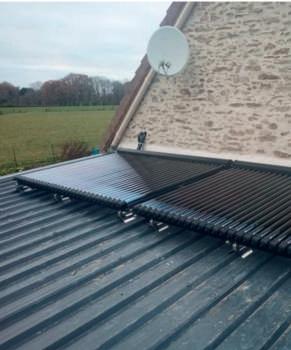
















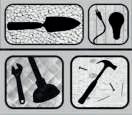
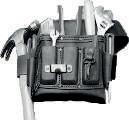







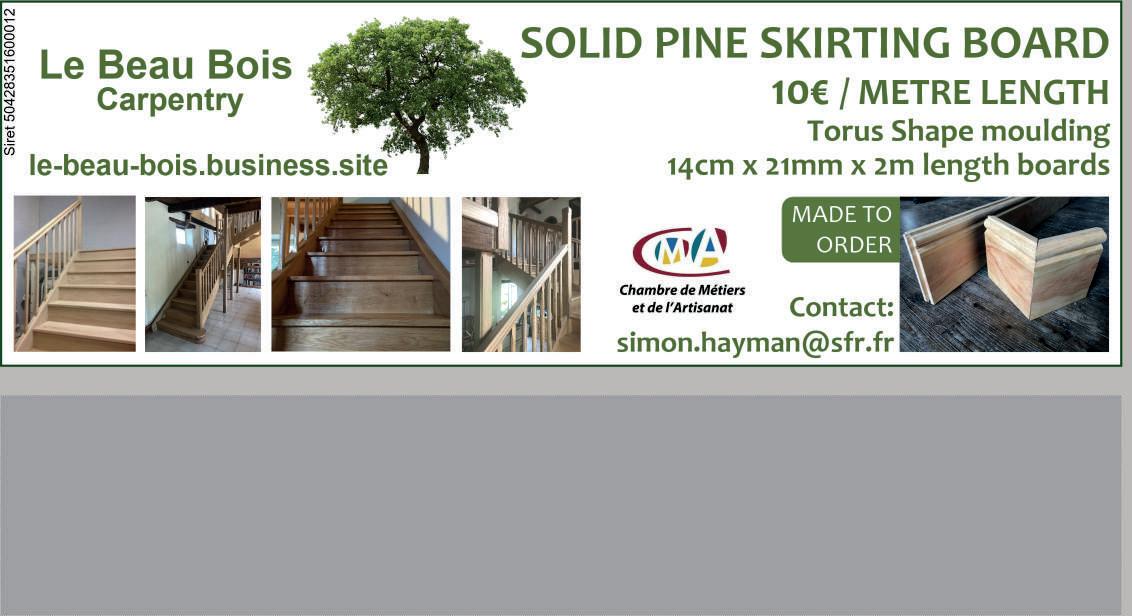









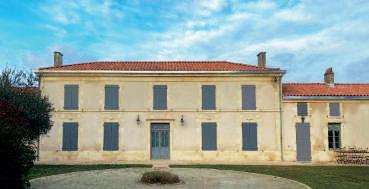

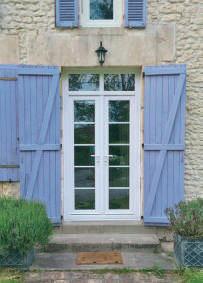













THERE ARE SOME GREAT DAYS OUT TO BE HAD FOR MOTORSPORT FANS IN THE SAINT-JUNIEN AREA
The motorsport association “ASA Terre de St Junien” runs all sorts of racing events throughout the year, including two local rallies, auto-cross and, unbelievably, camion-cross on the St Junien circuit! We agreed to sponsor their final “Rallye Vienne-Glane POL” in September this year, and had a great weekend watching our Millers Oils logos fly past from the public viewing areas!
The action started with vehicle scrutineering on the Saturday, which involves expert scrutineers ensuring that all of the vehicles comply with the safety regs and are fit to race. Once the cars have been checked, they are parked up in the “parc fermé”, ready for the following day’s racing.
The racing took place over two routes, north and south of the Vienne River
This was our first rally, so it took us a while to work out what was going on! The way the ASA Terre de St Junien runs it is that each car is released from the parc fermé at the start of the day (beginning at 08h00) in number order, starting with the historic vehicle category - cars from the 80s! - which are given a pretty good head start so that the following car, a modern VW Polo rally car, wouldn’t catch them. Essentially, each car is racing against the clock for each stint. Each car will do route one first, then drive over to do route two, then return to the parc fermé.
By Cara Samways By Greg SamwaysCara is the commercial brains behind Millers Oils France and the technical guru on the wide range of products. Greg is the ideas man, as well as being a professional geoscientist, a part-time bagpiper and a wildlife enthusiast


The racing took place over two routes, north and south of the Vienne River. However, the routes are not published until the Thursday before the rally so that the drivers don’t have too much time to go out and test the corners!
Once all the cars have completed stages 1 and 2, they are ranked in time order and then dispatched again for two more runs, before returning to the parc fermé. The day finishes with a fifth and final stage, which is a rerun of stage 1 only, after which the presentations are made back in the parc fermé.
Overall there were 115 cars in 22 categories, so lots of people got prizes! The overall winner was Jean-Charles
Beubelique, with his co-driver Amandine Borderie, in their Volkswagen Polo GTI. It is amazing to see the difference in the classes. In the first stage, the average speed of the fastest car was around 109km/h, whereas the last car was averaging just over 44km/h!
All in all we had a great couple of days, and we will be sponsoring this rally again next year, and the other events organised by the ASA Terre de St Junien. If you fancy a day out next year, keep an eye out for us wearing our Millers Oil jackets and caps – we’ll be on the circuit or one of the many public viewing areas around the rally circuits.

